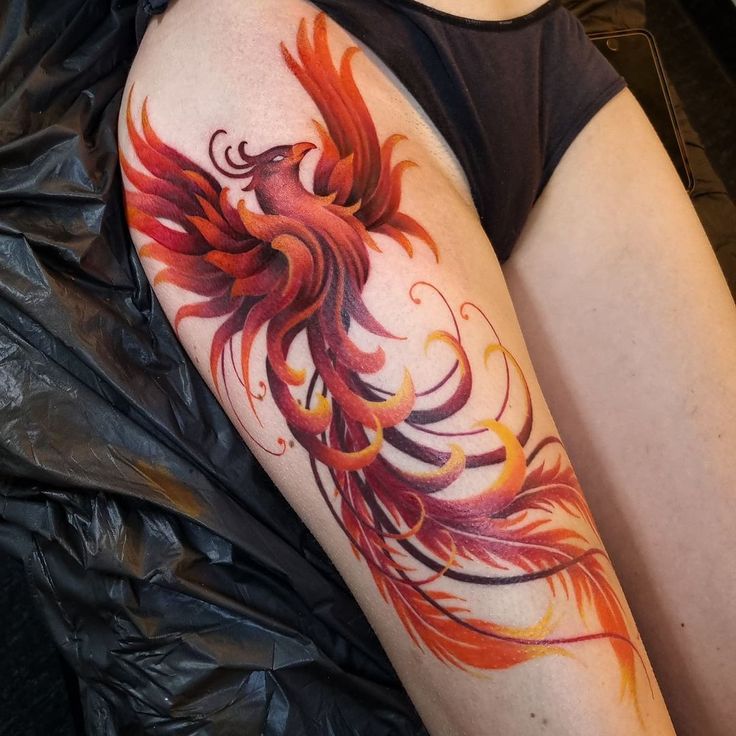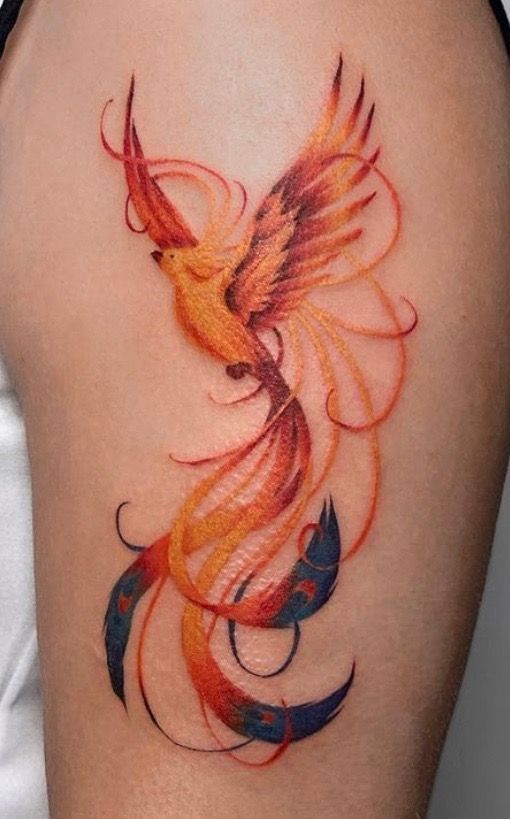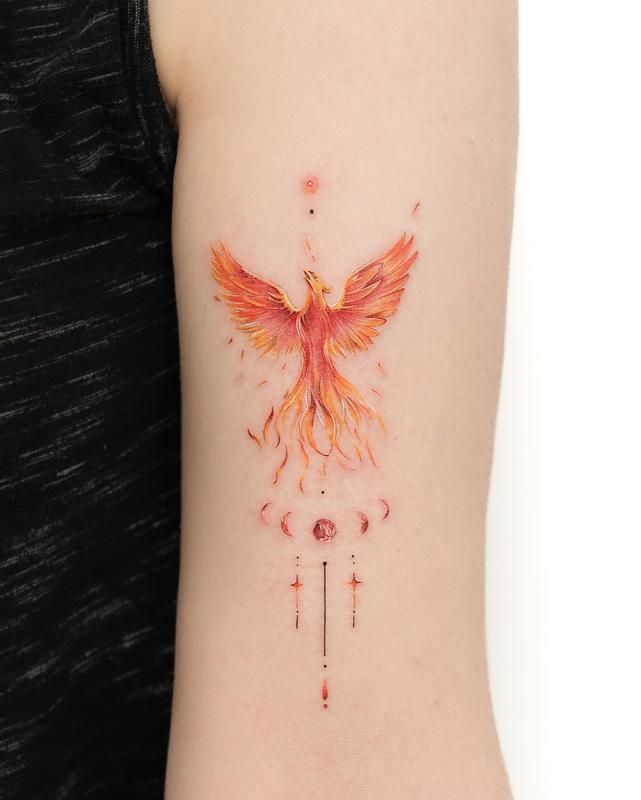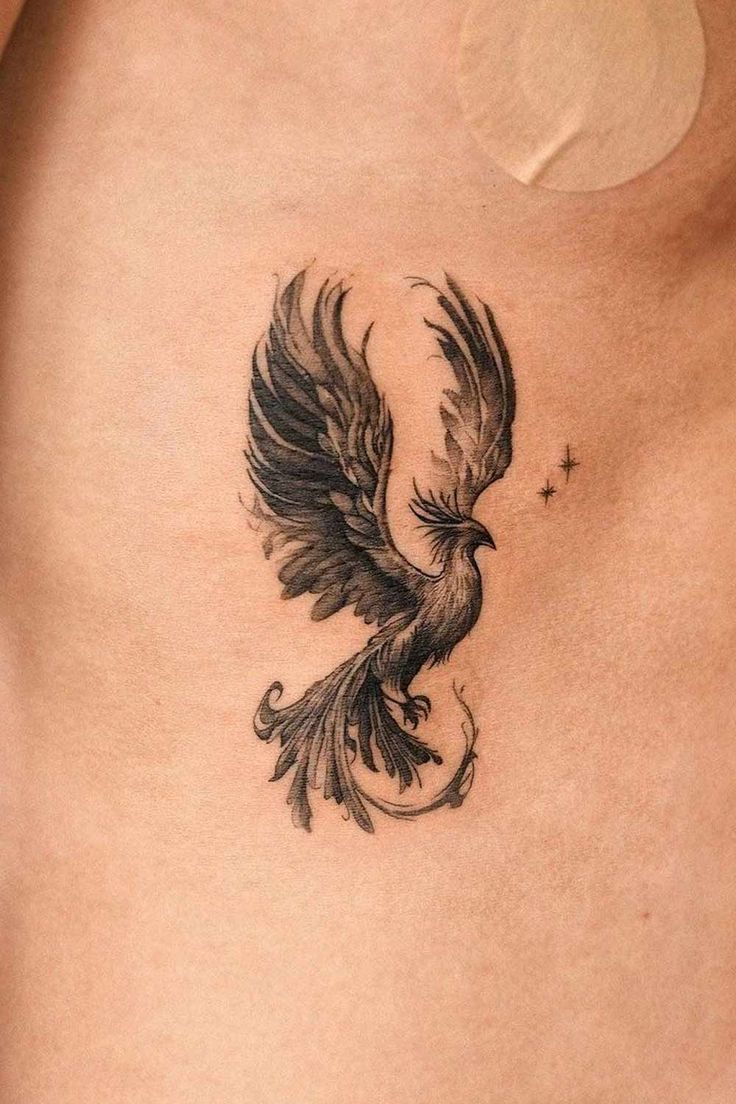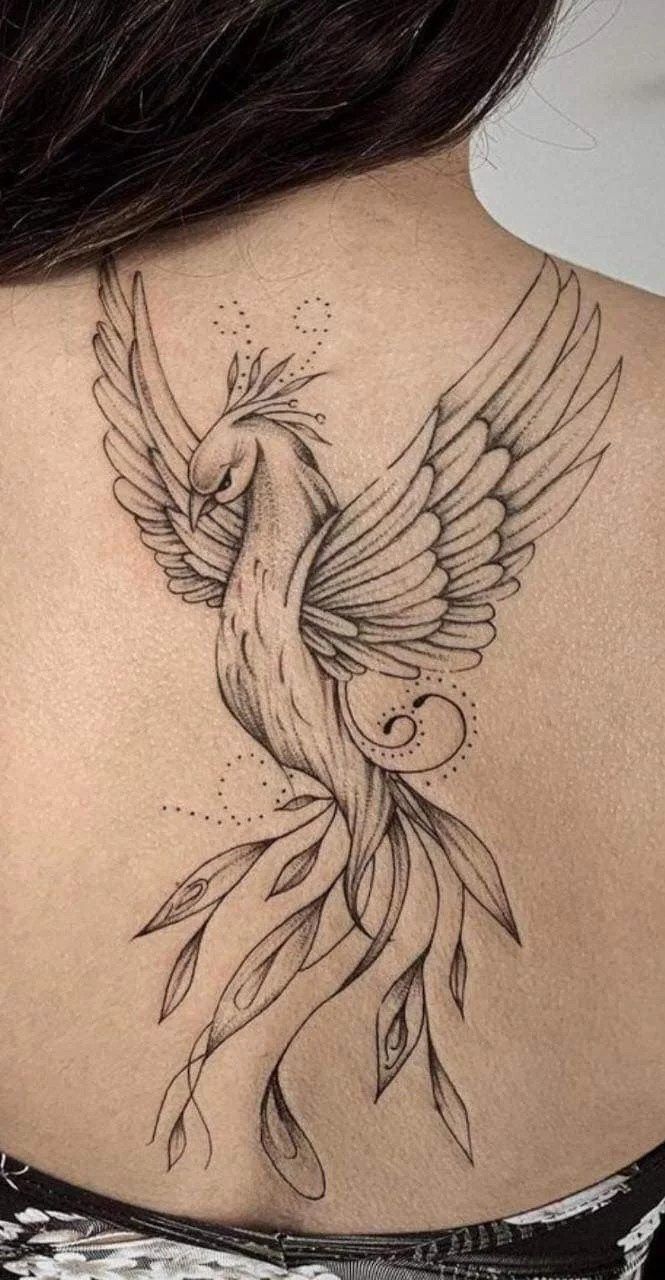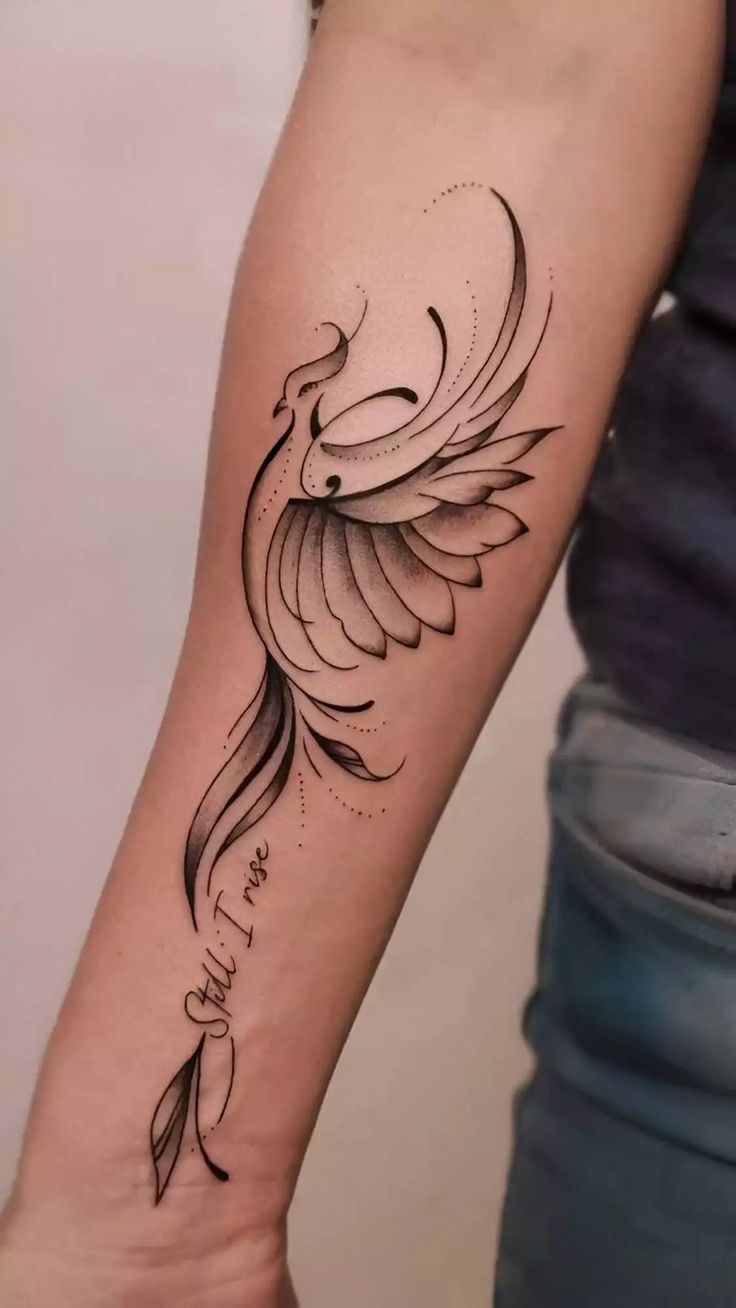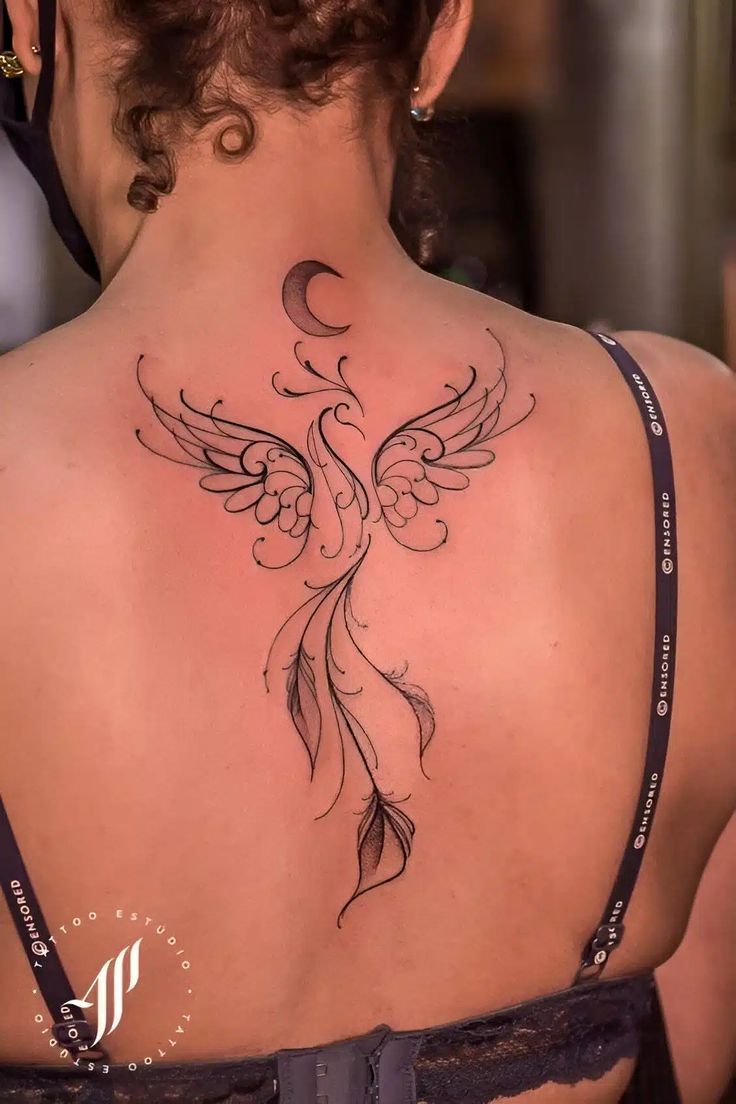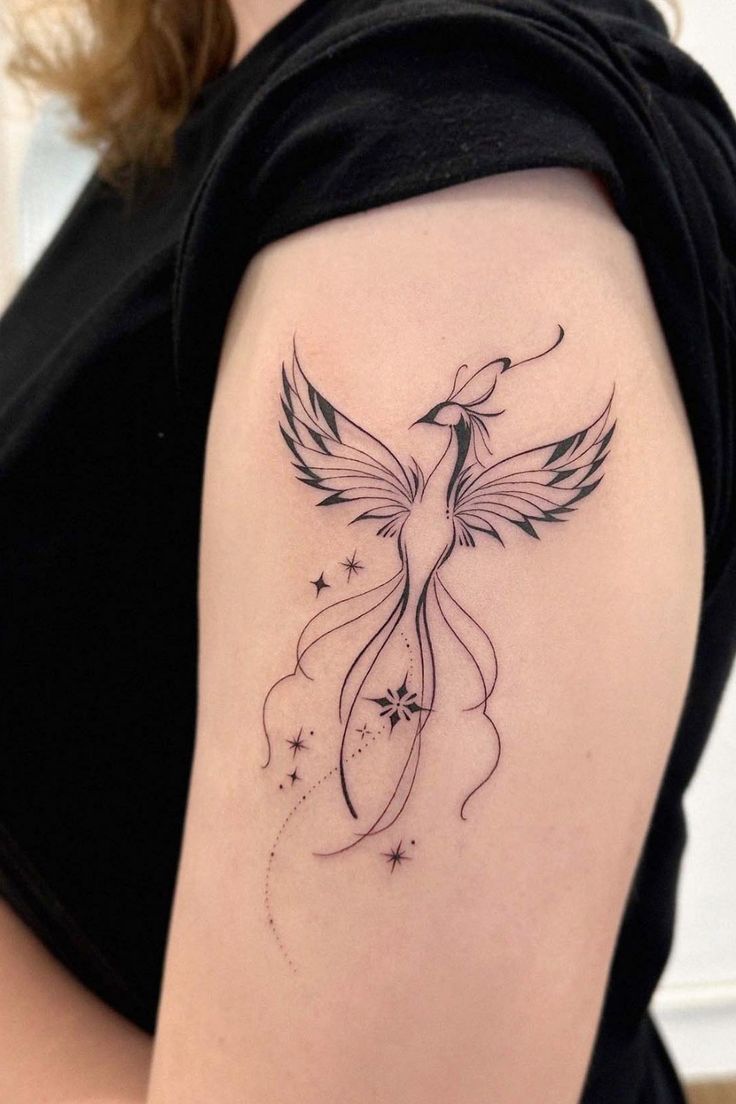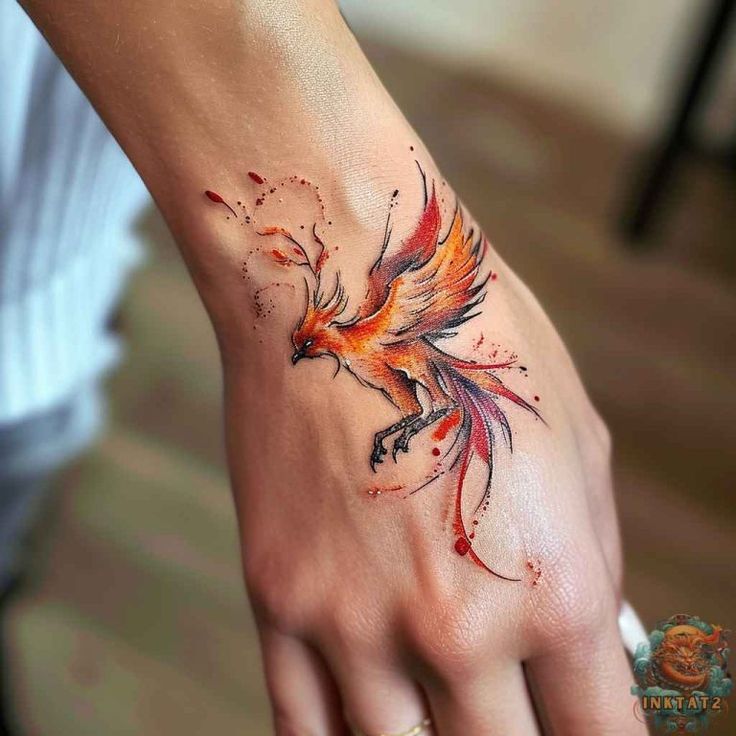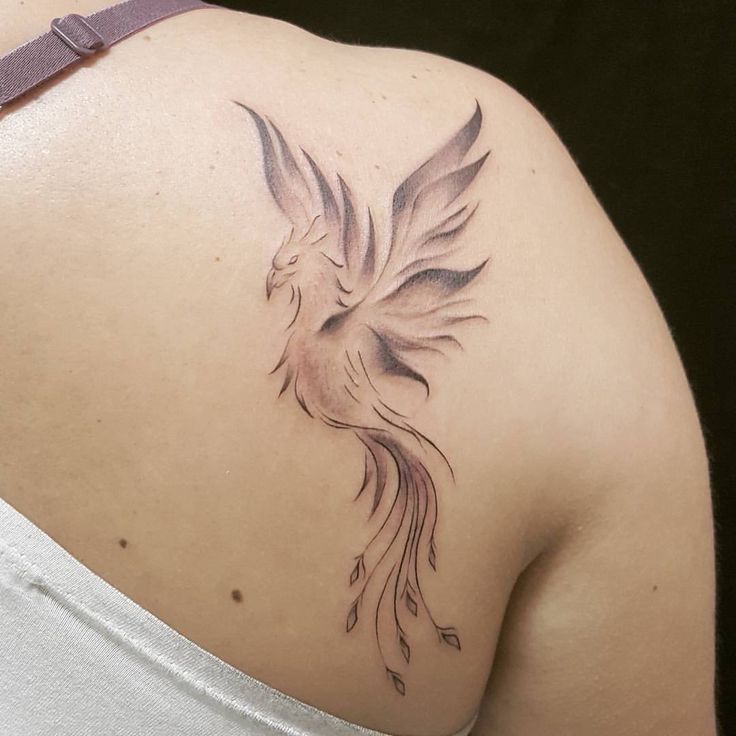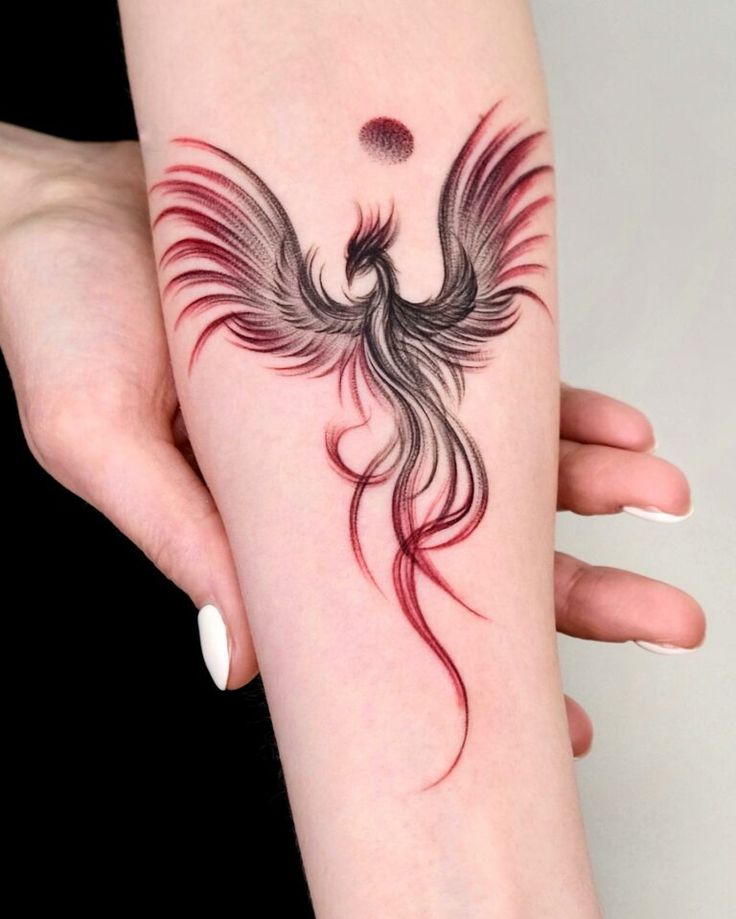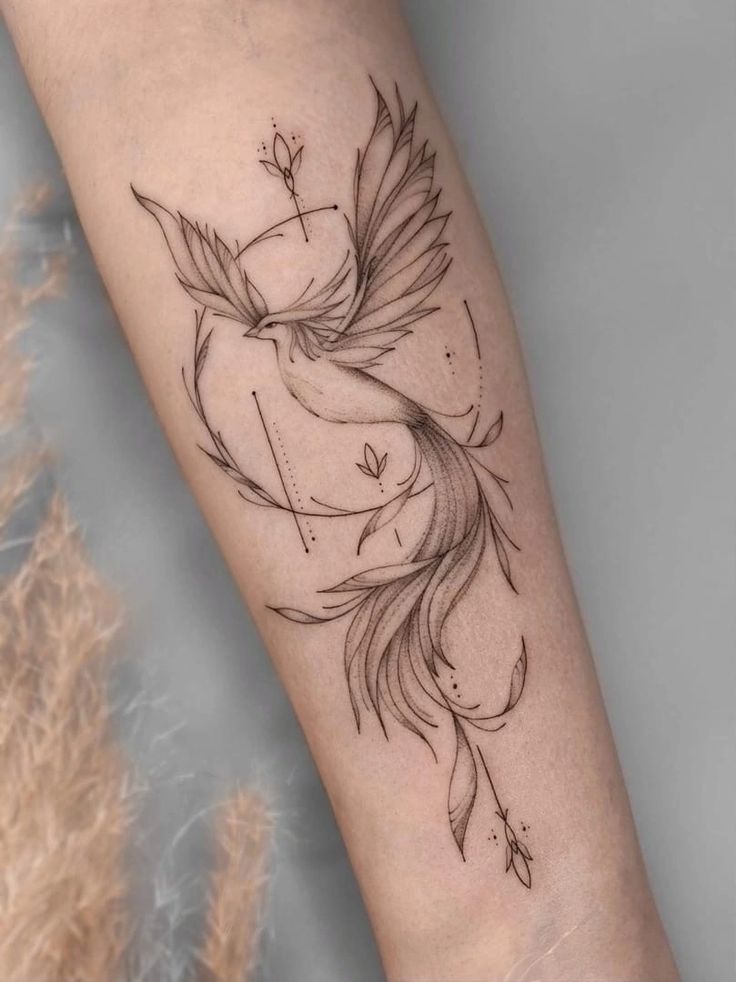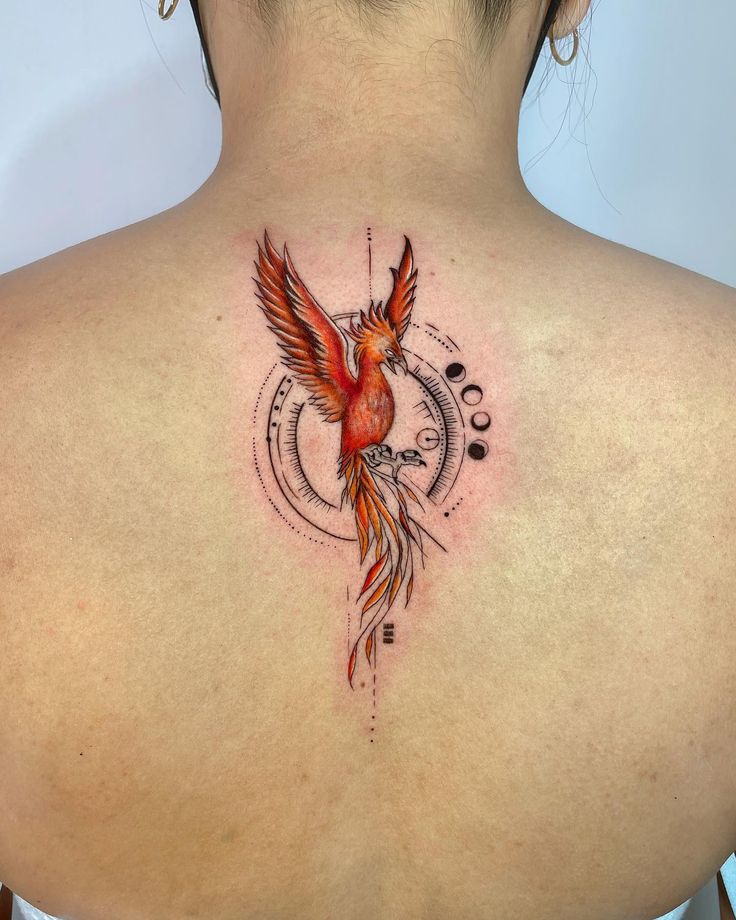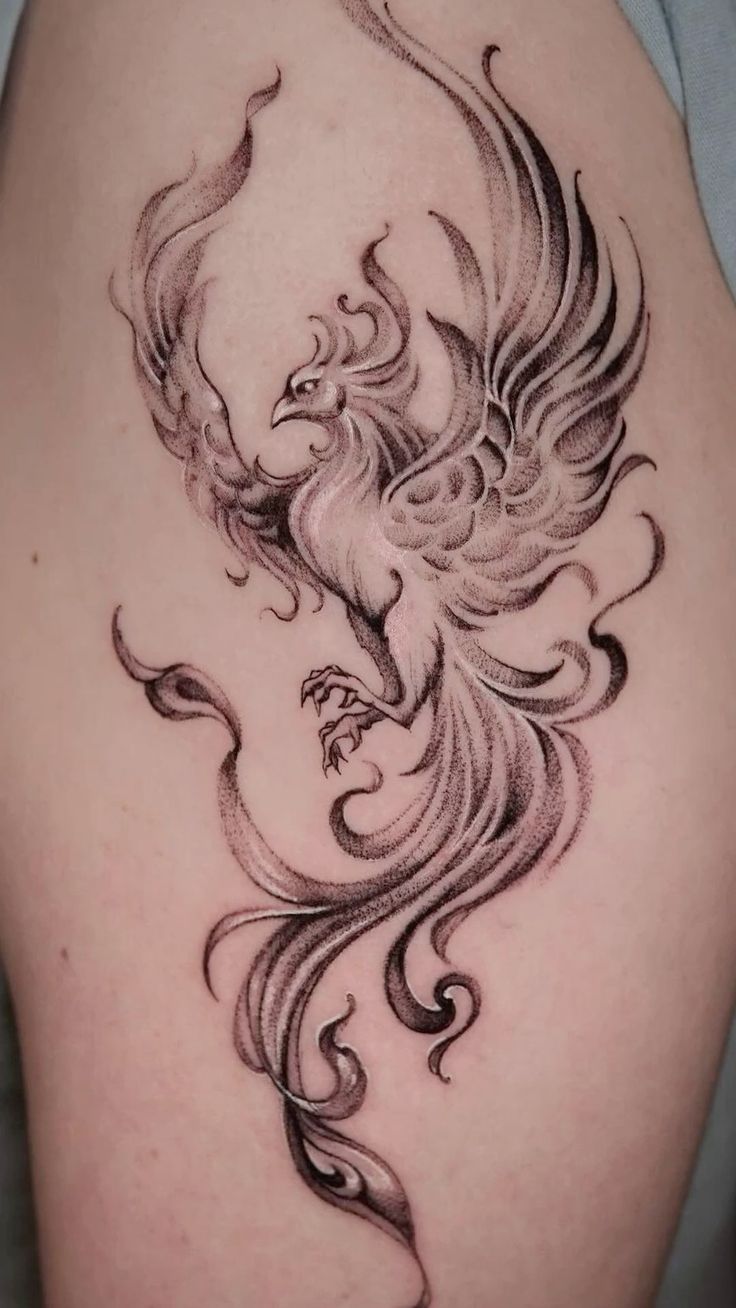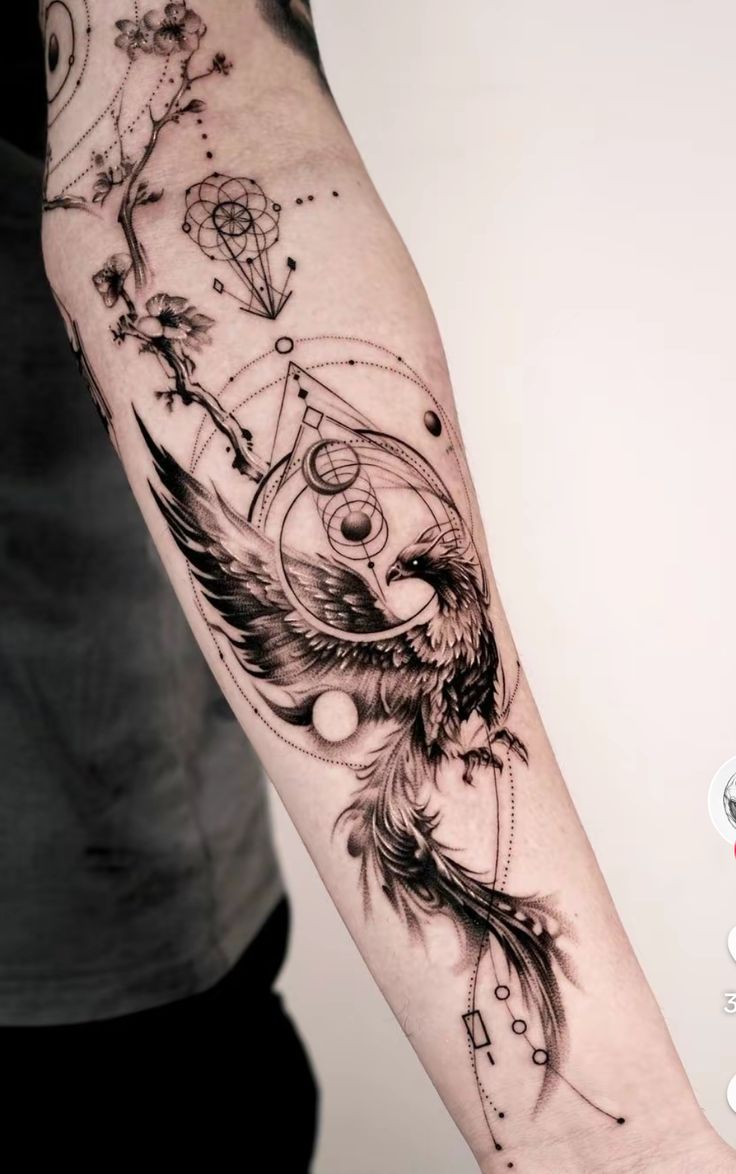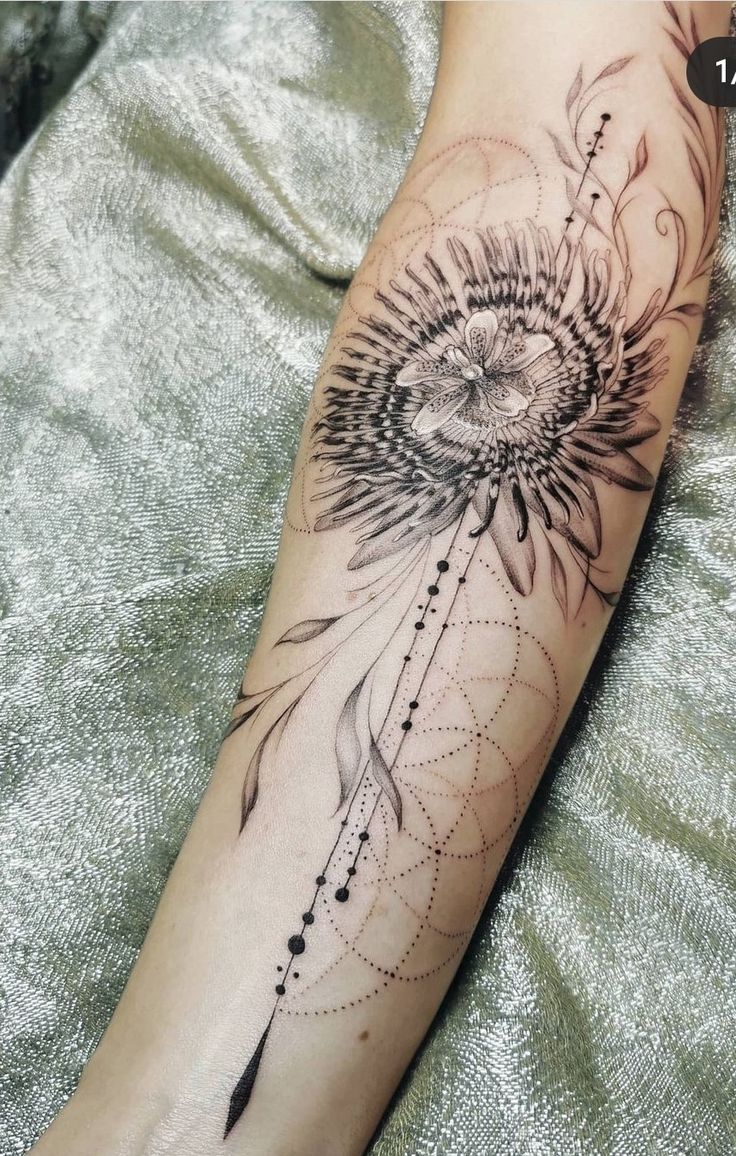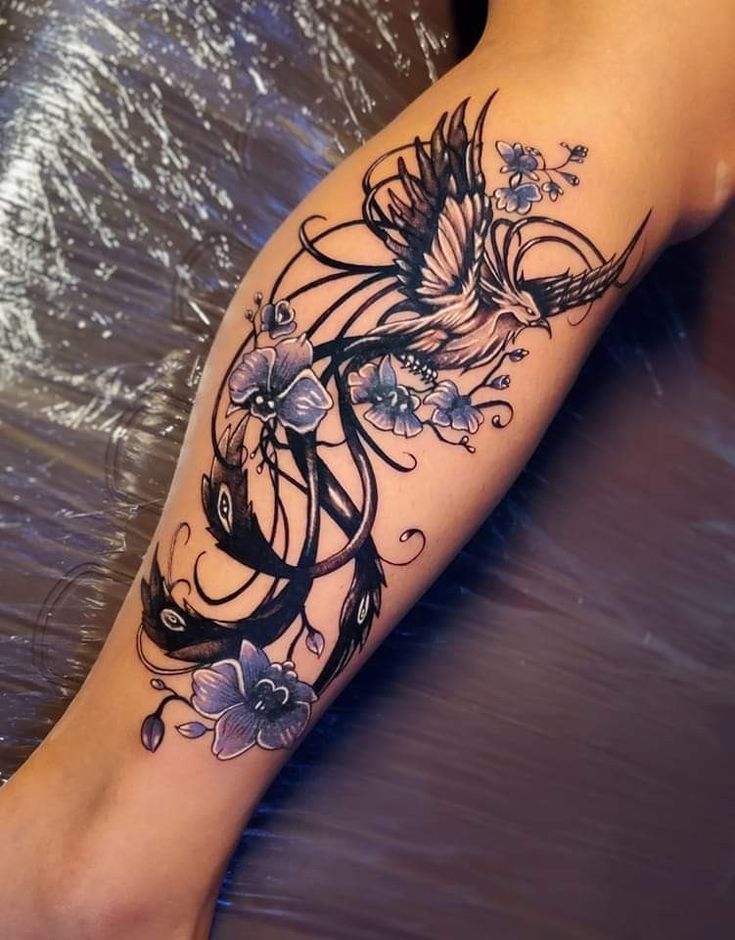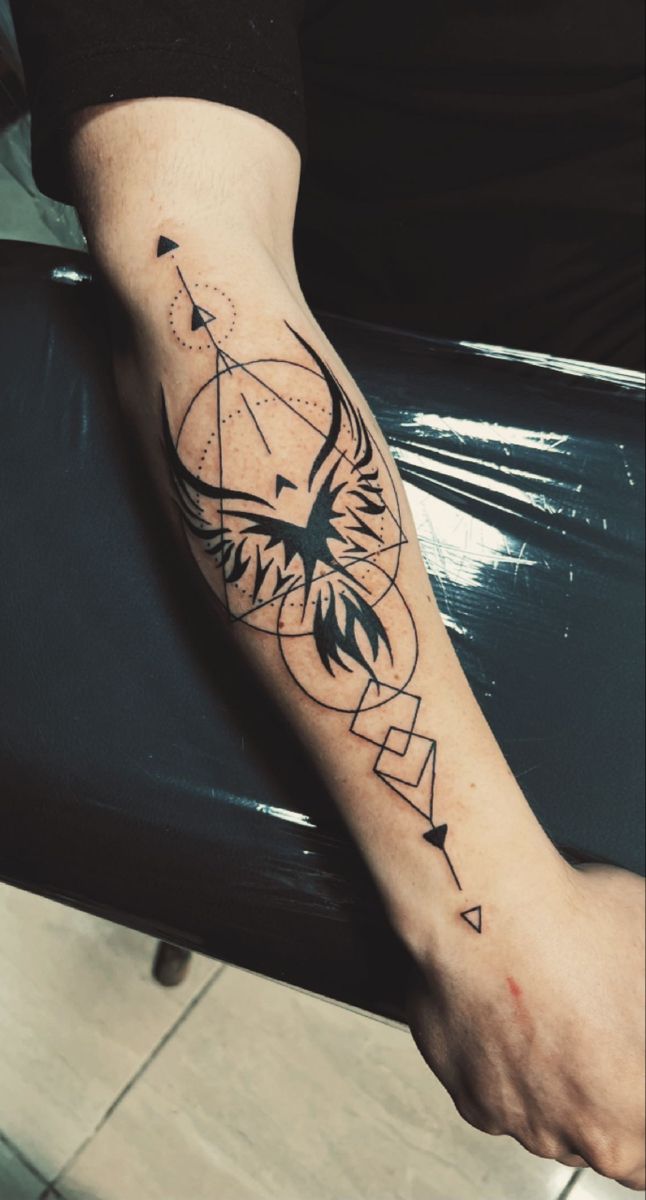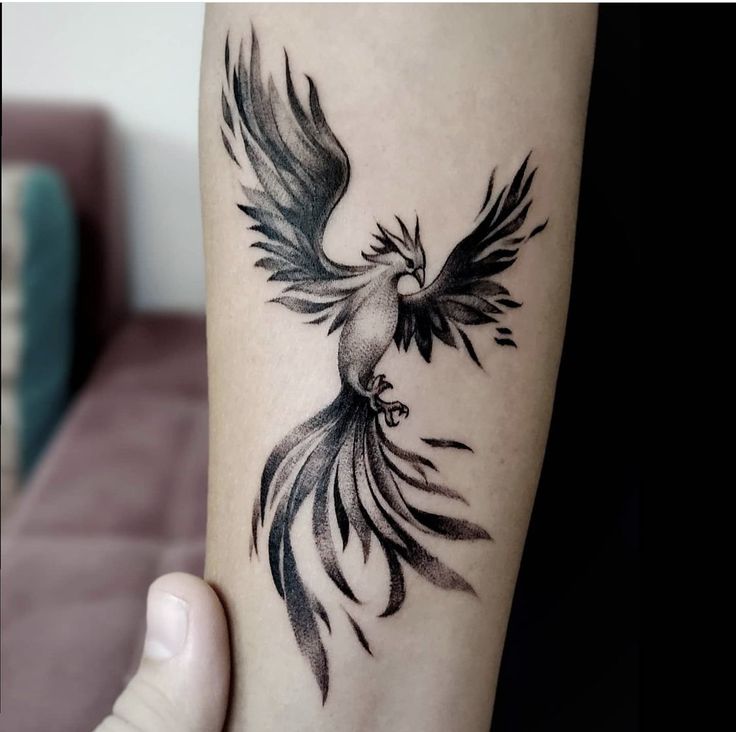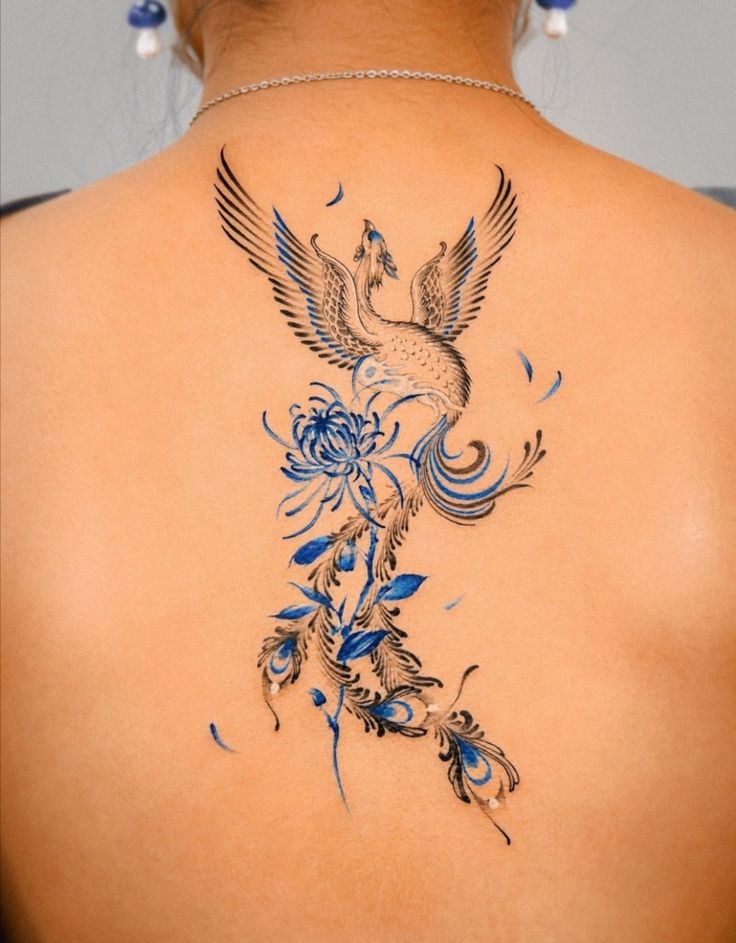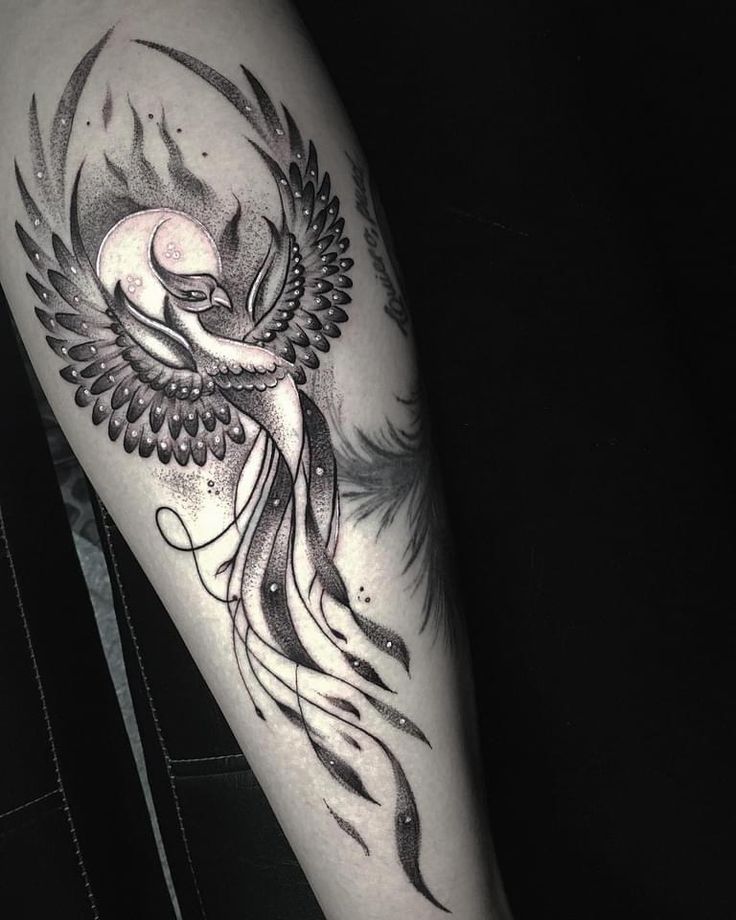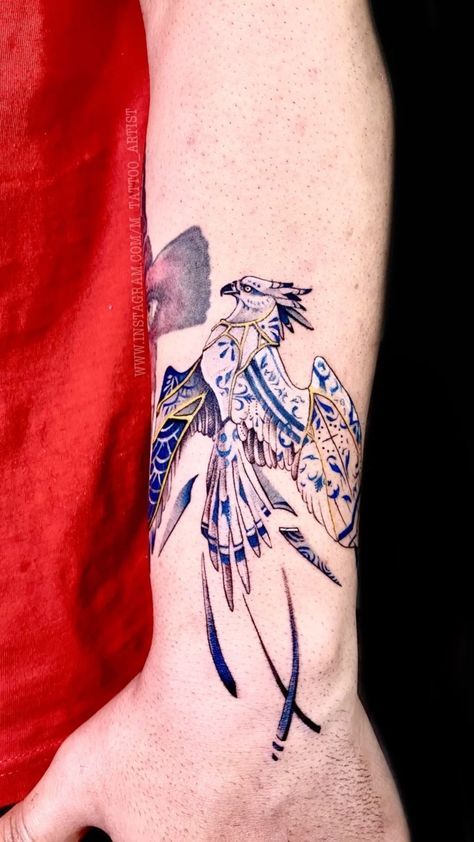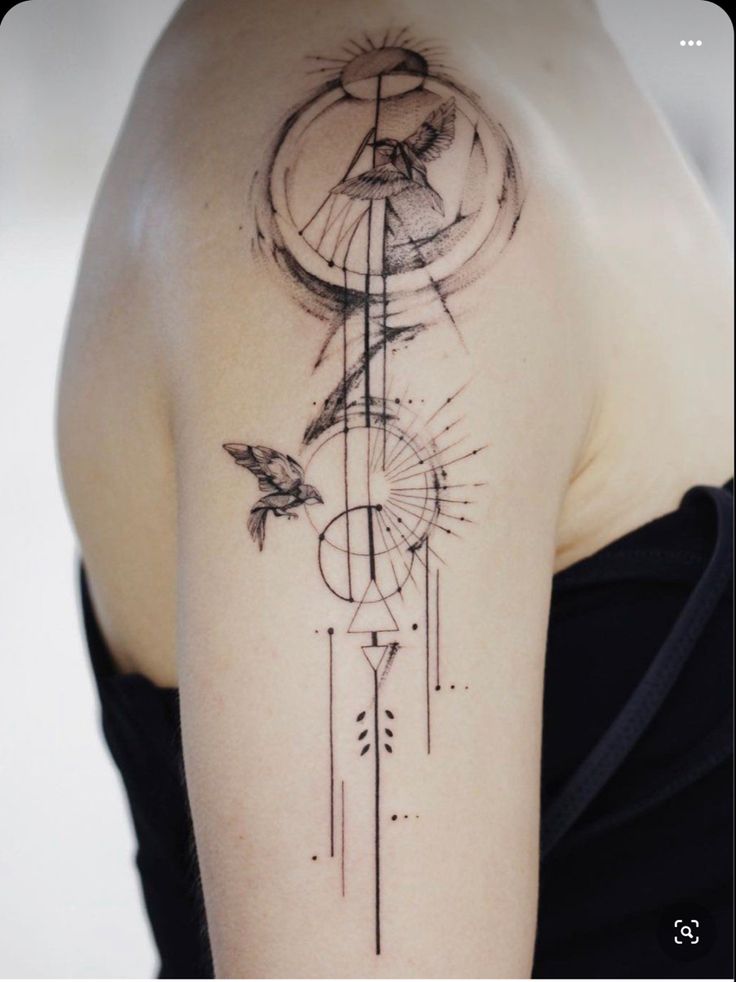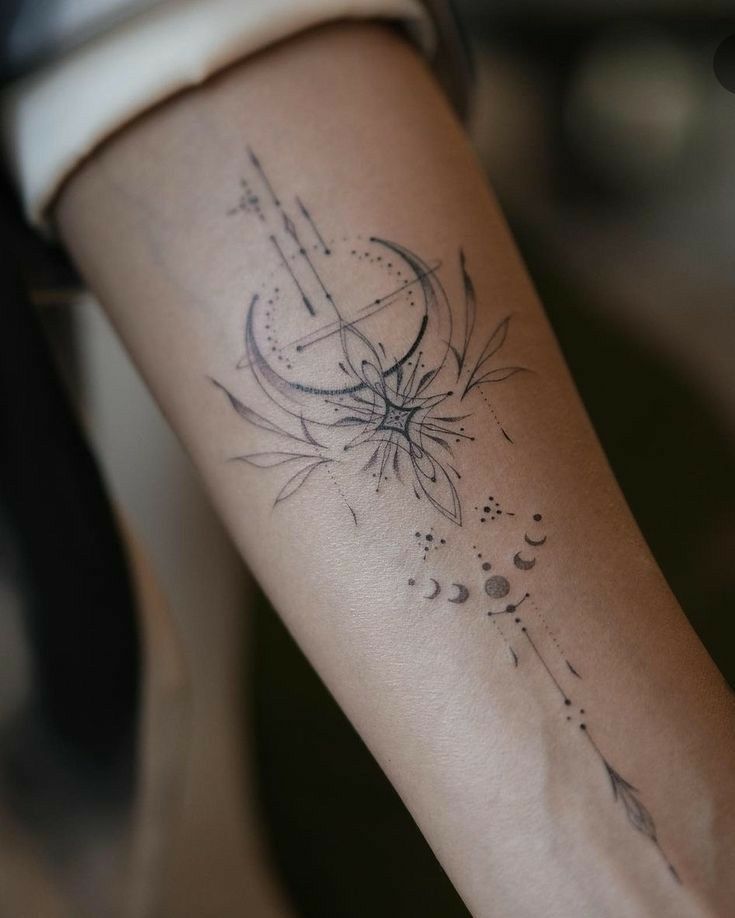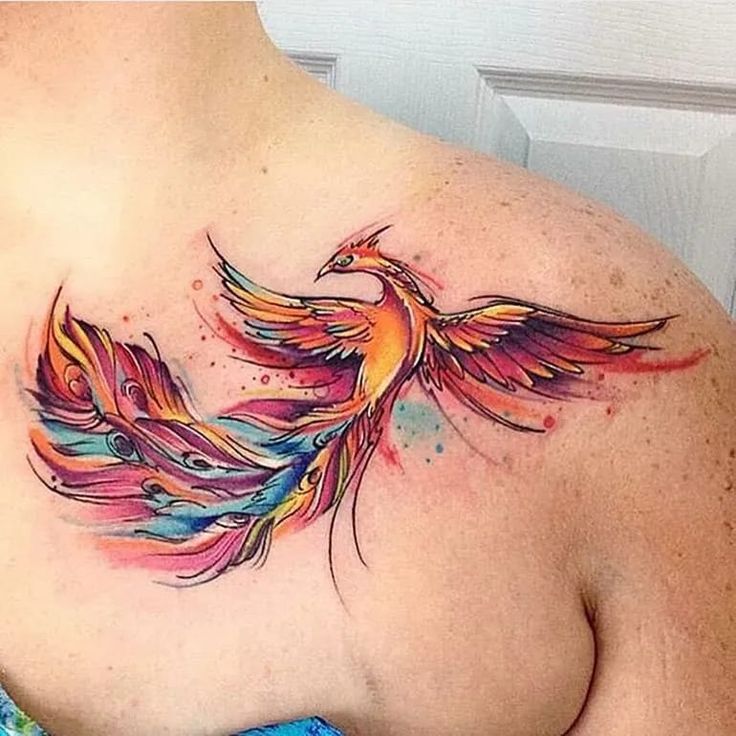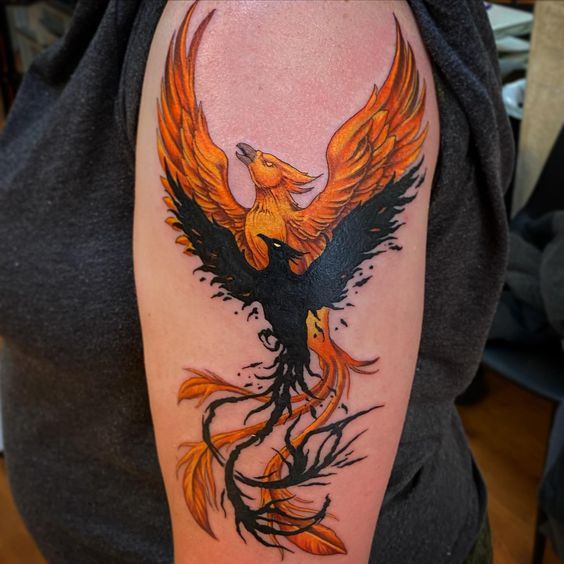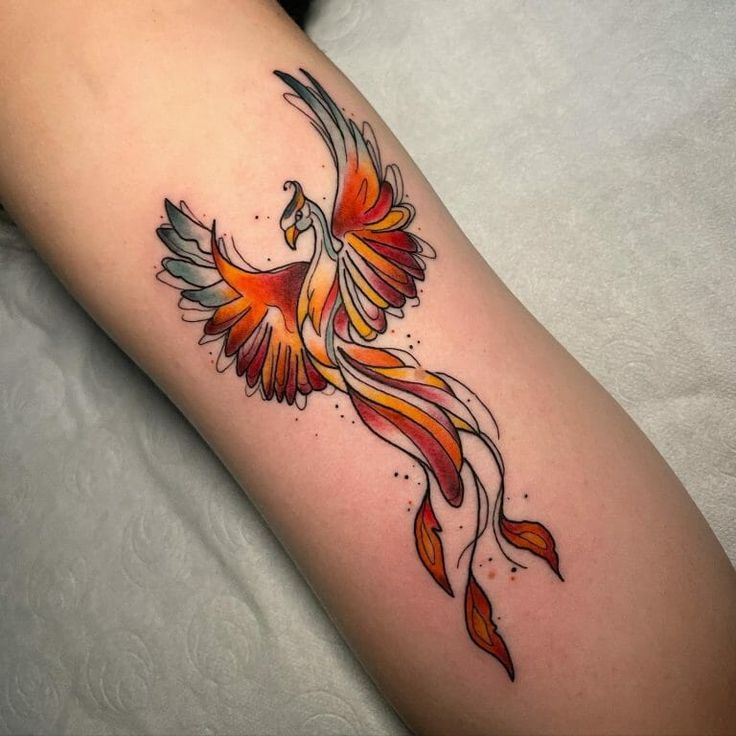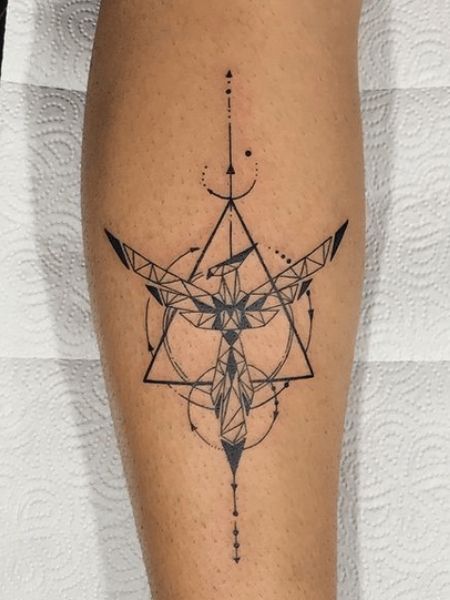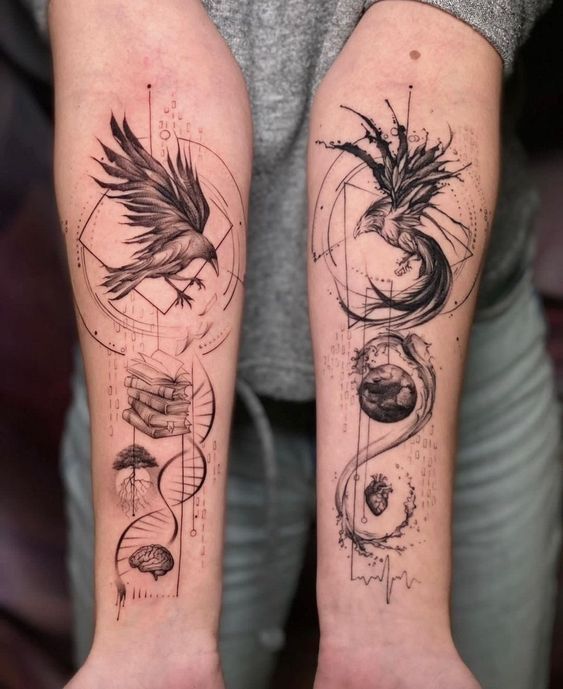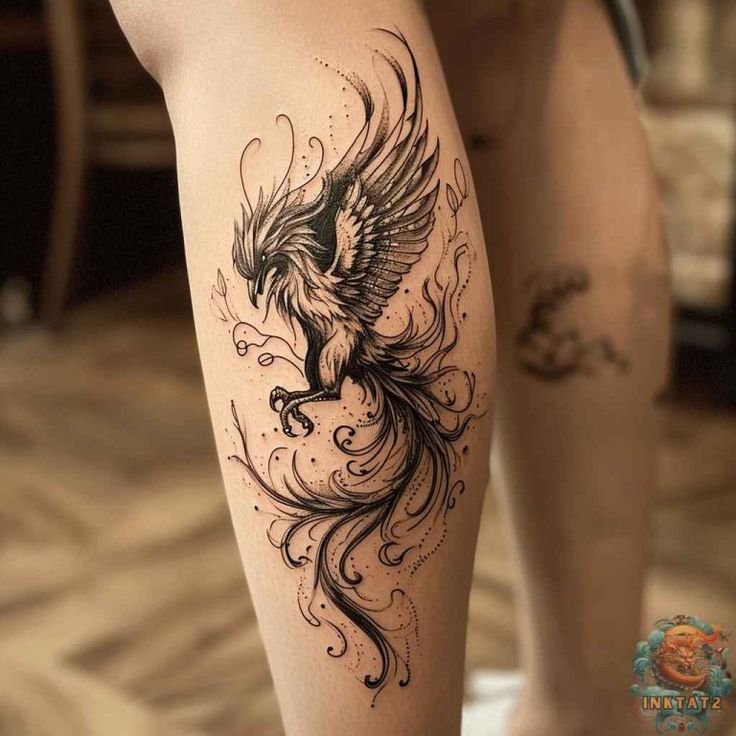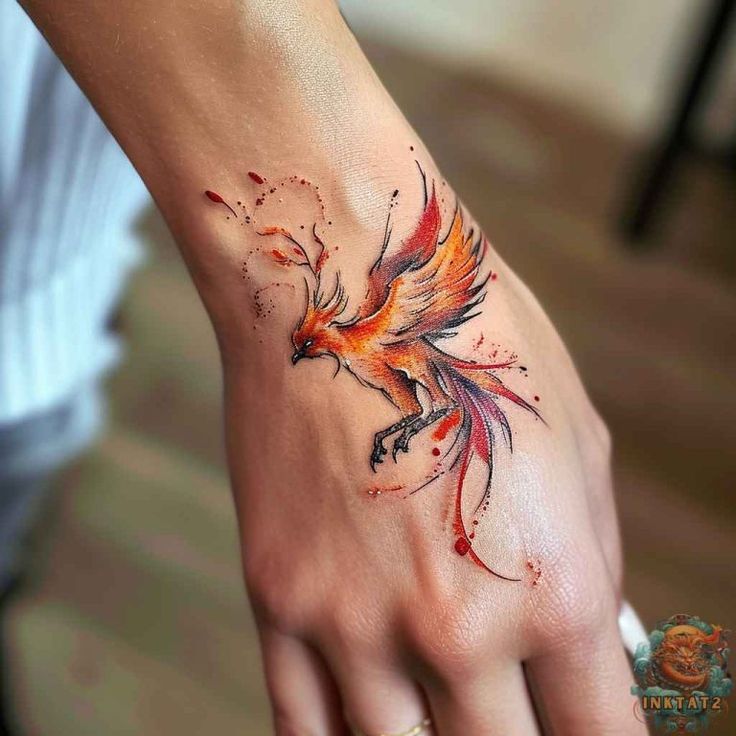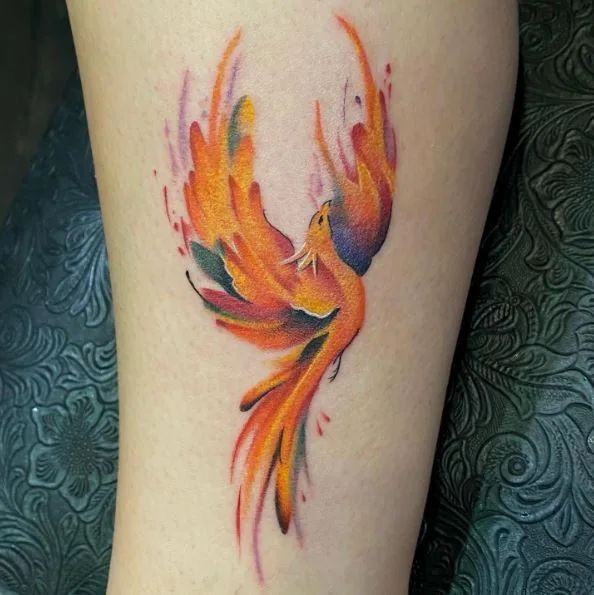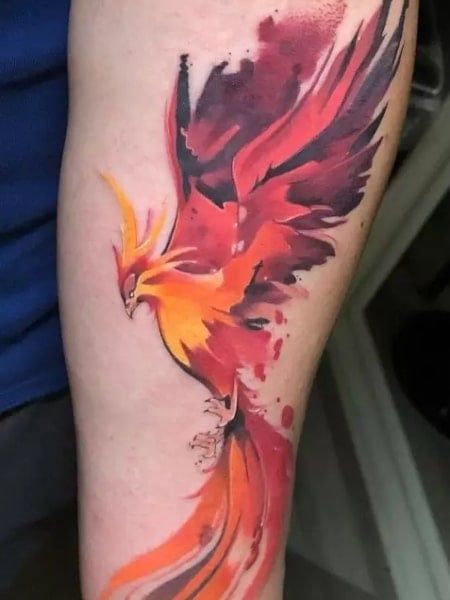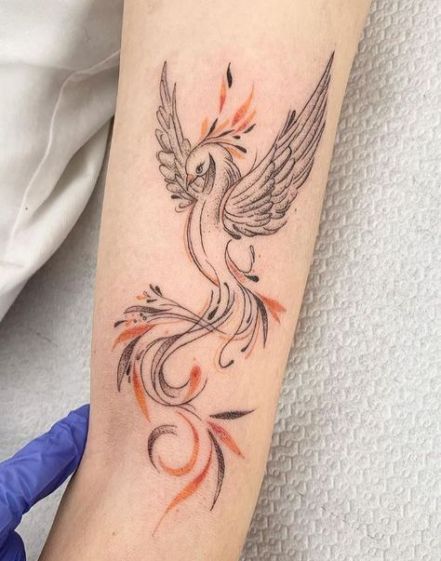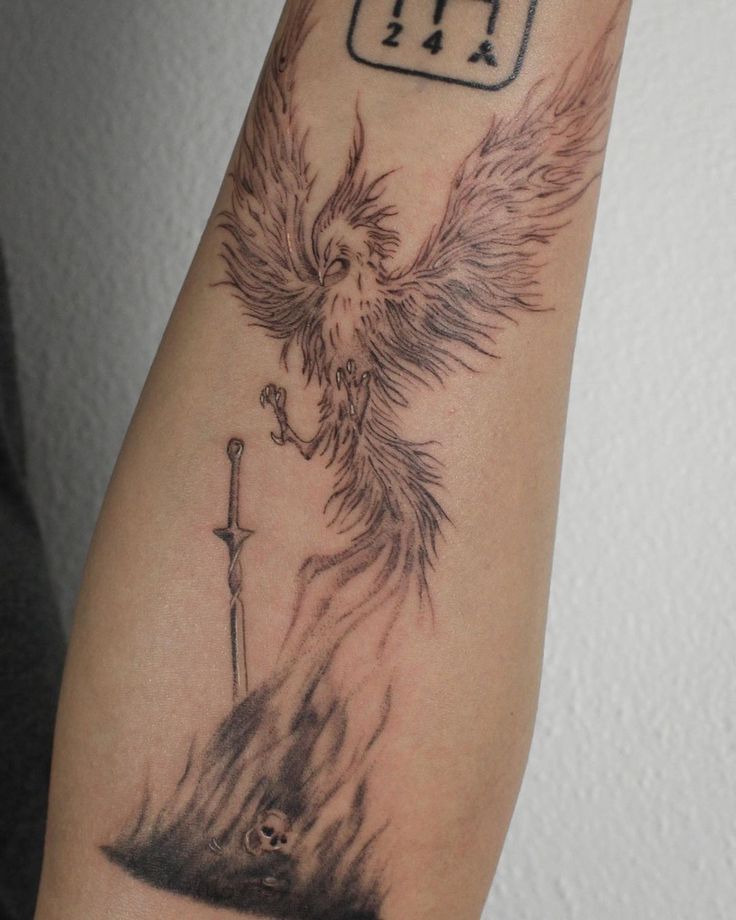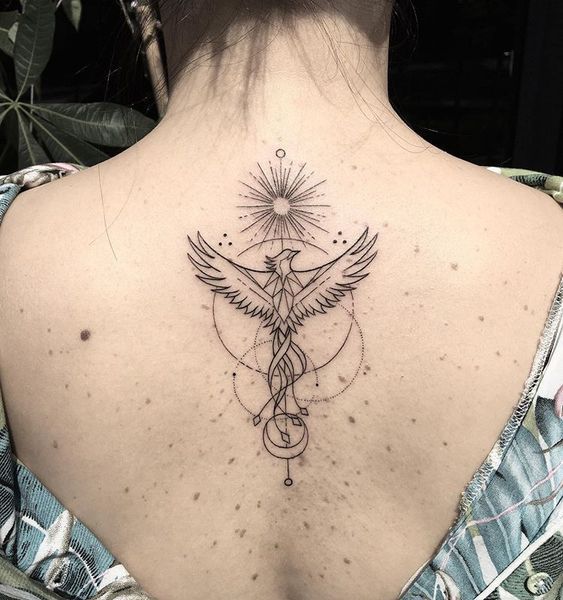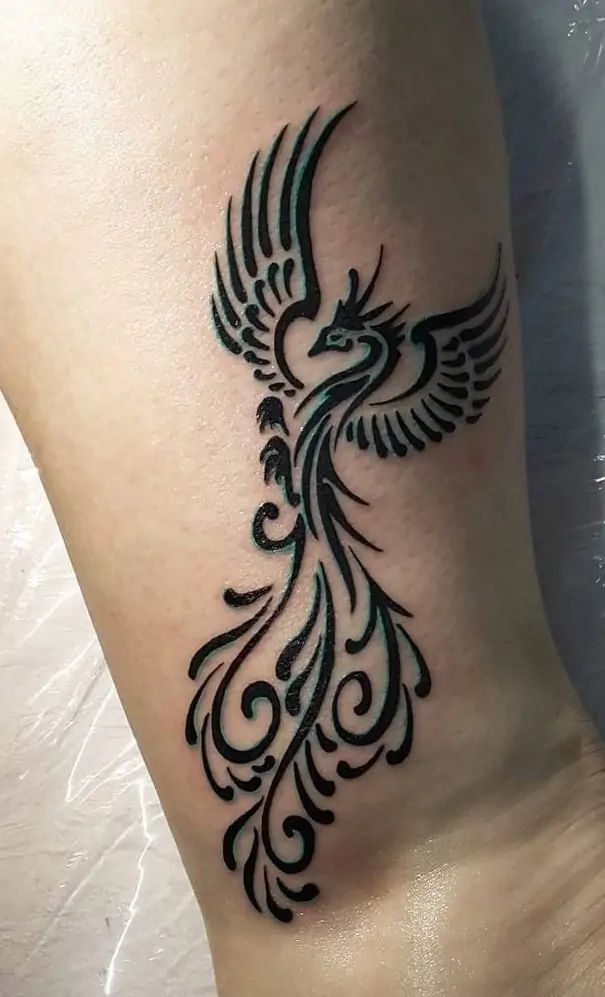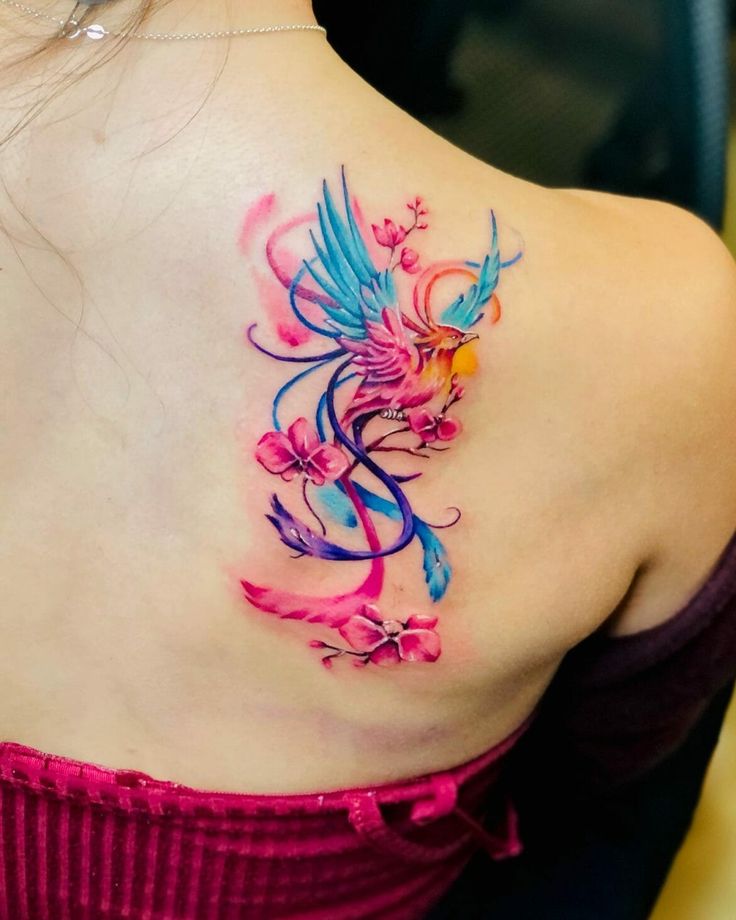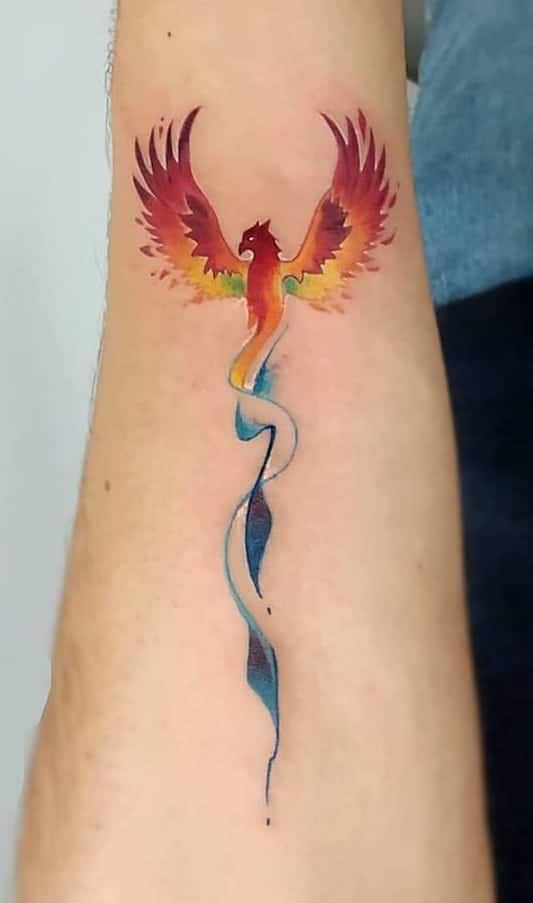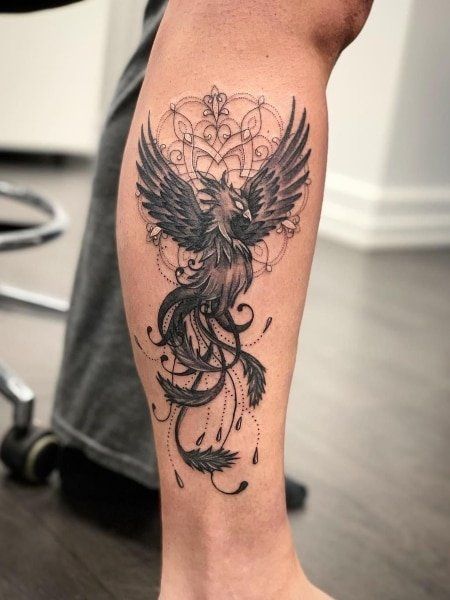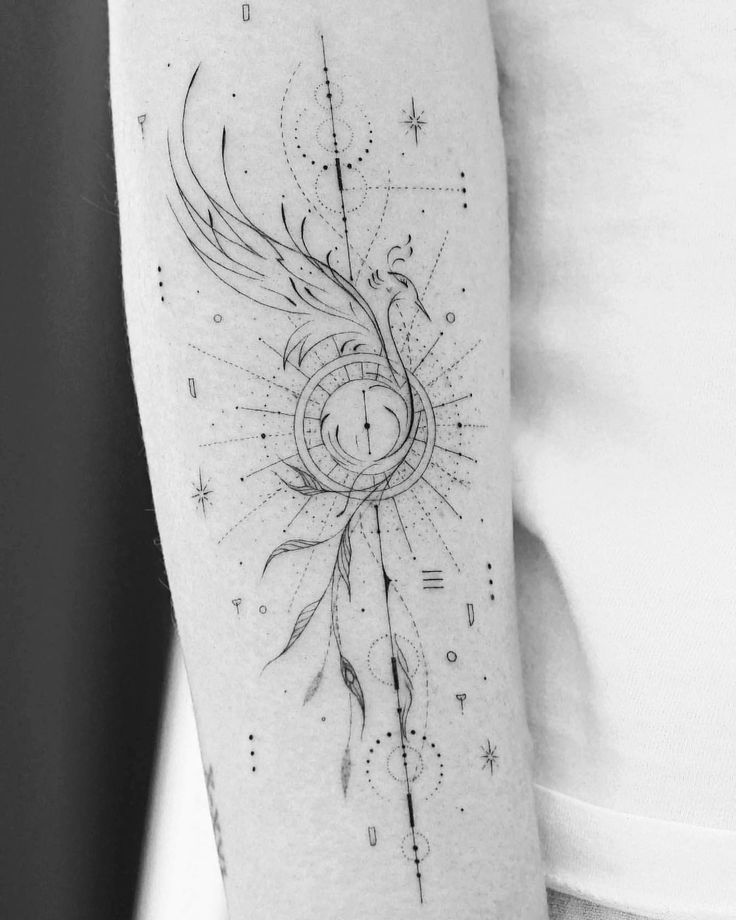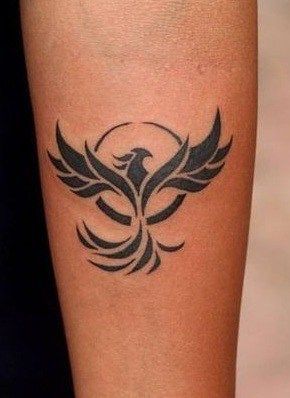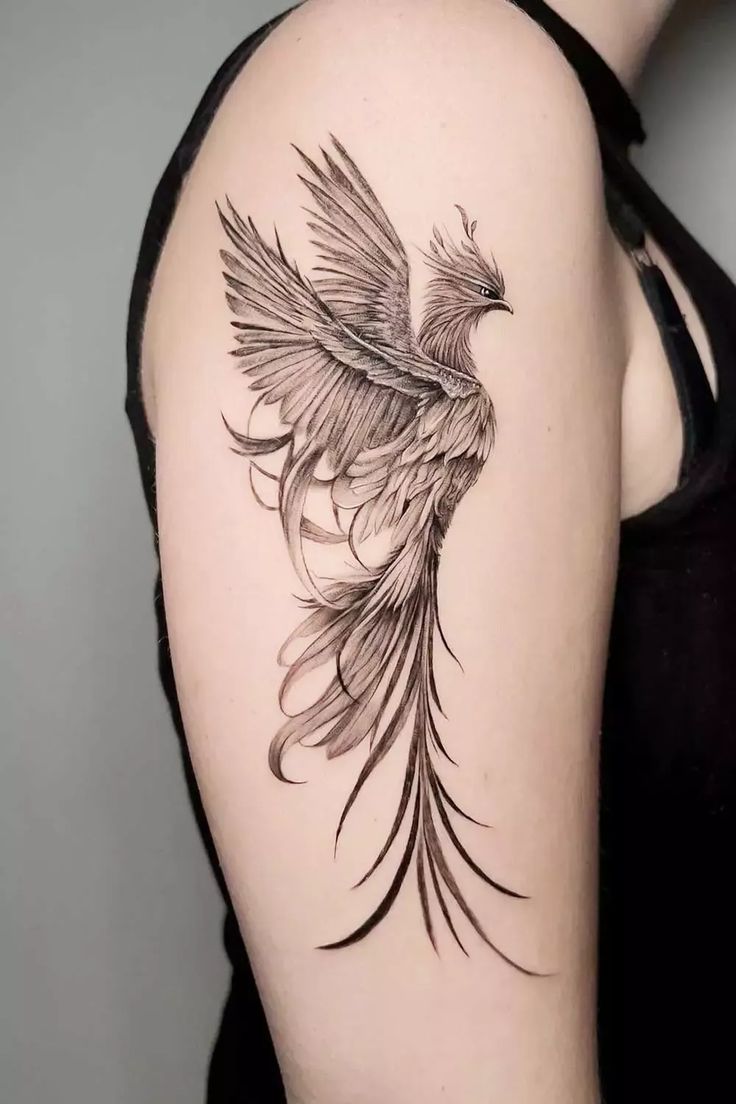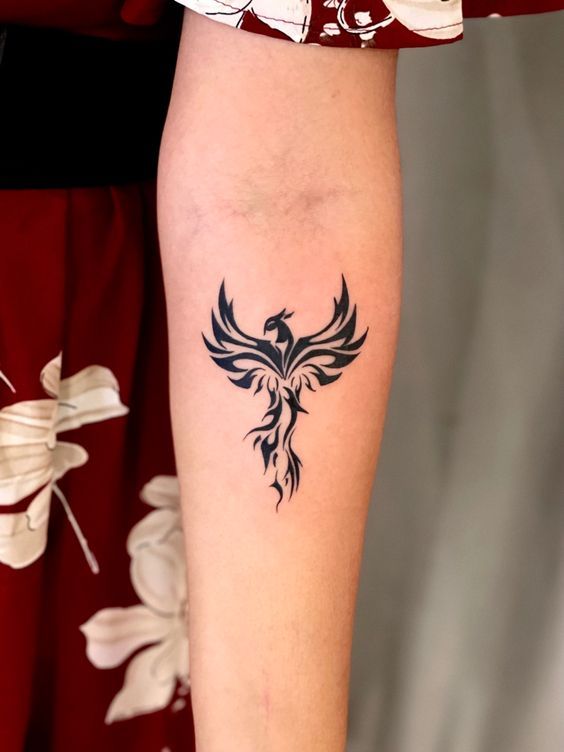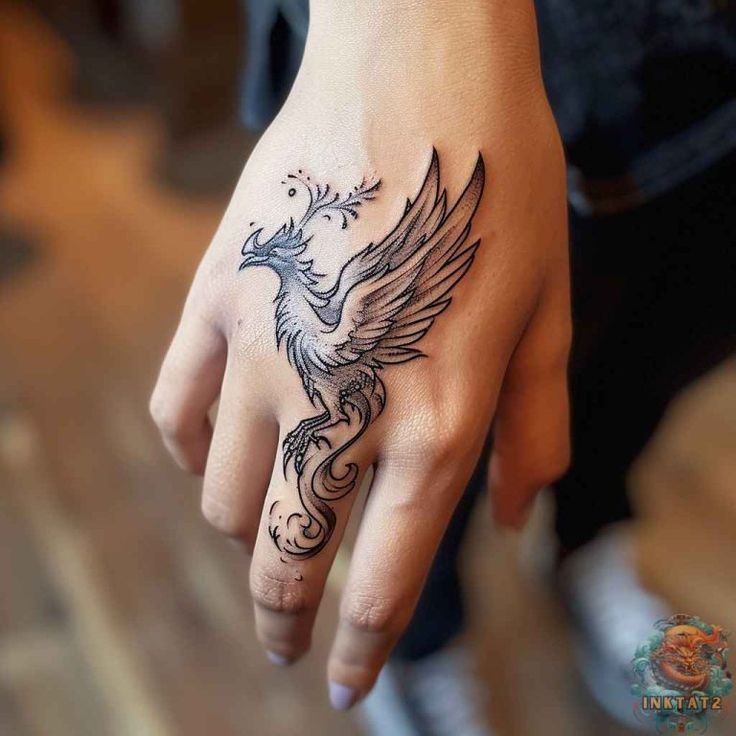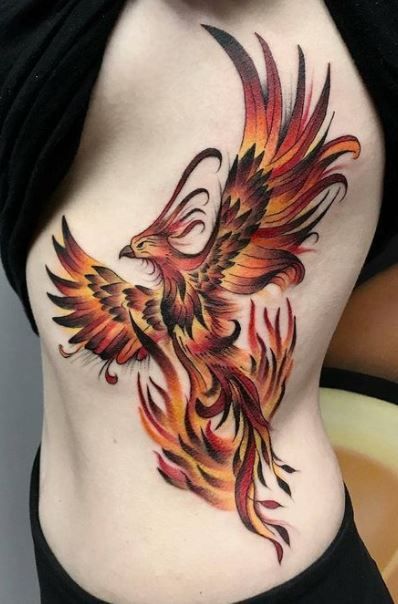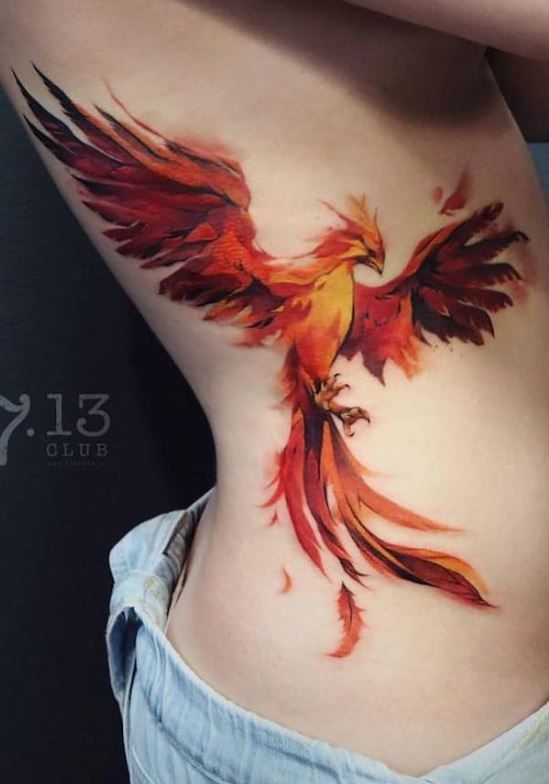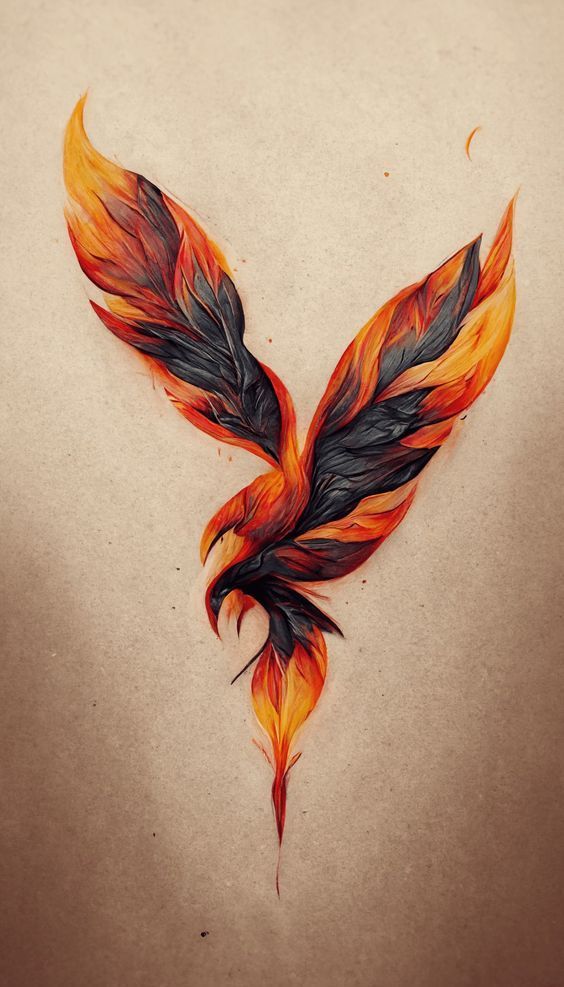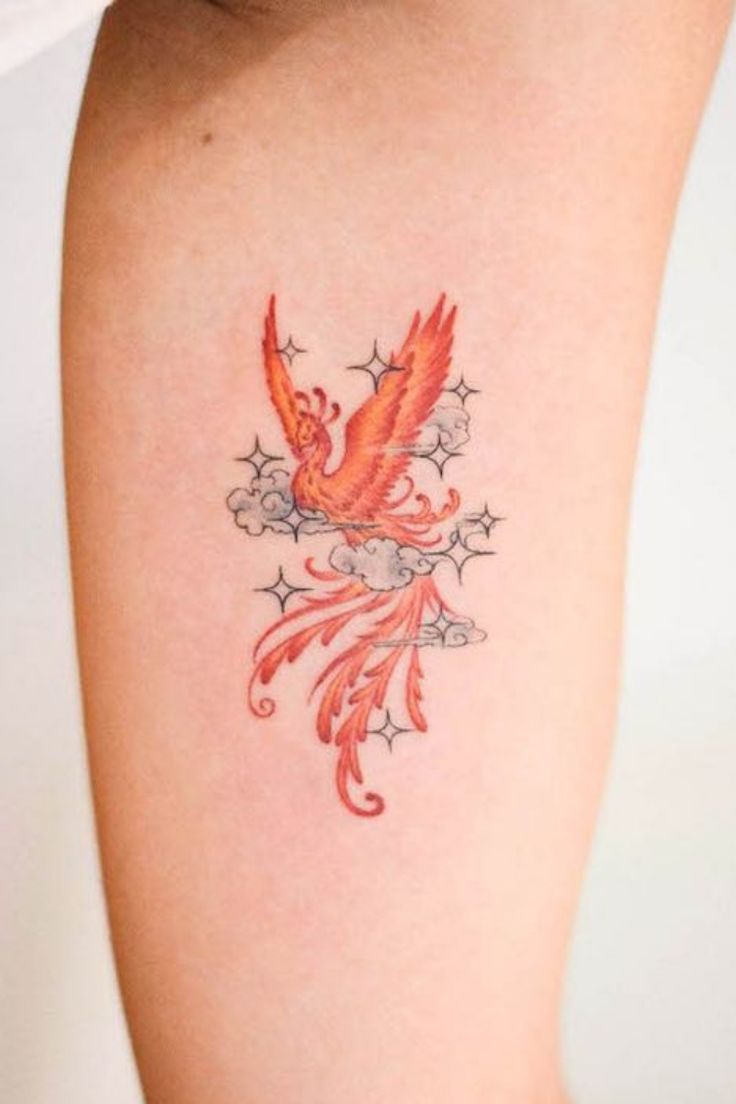Phoenix Tattoo: The Ultimate Guide to Mythical Rebirth Designs
- Leonardo Pereira
- Mar 26
- 42 min read
Are you considering a powerful and symbolic tattoo that represents transformation and resilience? Look no further than the majestic phoenix tattoo. This comprehensive guide explores everything you need to know about phoenix tattoos, from their rich mythology to modern design interpretations. Whether you're drawn to the traditional Japanese Ho-o or a contemporary watercolor phoenix, we'll cover all aspects of this iconic mythical bird tattoo.
Discover how the phoenix's symbolism of rebirth and renewal can be incorporated into stunning body art that tells your personal story of growth and transformation. From bold, large-scale designs to subtle, minimalist interpretations, we'll explore the versatility of phoenix tattoos and how they can be customized to suit any style or personality.
Table of Contents:
From understanding the deep symbolism of the firebird to exploring various rising phoenix designs, this guide provides all the information you need to make an informed decision about your mythical bird tattoo. Let's embark on a journey through the world of phoenix tattoos and discover the perfect design to symbolize your personal rebirth and transformation.
Understanding the Phoenix Myth

The phoenix, a legendary bird of ancient mythology, has captivated human imagination for millennia. This mythical creature, known for its ability to rise from its own ashes, has its roots in various cultures across the globe, each adding its own unique interpretation to the phoenix lore. Understanding the rich history and symbolism of the phoenix is crucial for anyone considering a phoenix tattoo, as it adds depth and meaning to the chosen design.
In ancient Egyptian mythology, the phoenix was known as the Bennu, a sacred bird associated with the sun god Ra and the concept of creation and rebirth. The Bennu was often depicted as a heron-like bird with a long beak and a two-feathered crest. It was believed to be born from fire, rising from the ashes of its predecessor every 500 years, symbolizing the cyclical nature of time and the eternal renewal of life.
Greek mythology adopted the phoenix concept, describing it as a magnificent bird with vibrant red and gold plumage. According to Greek legend, the phoenix lived for 500 years before building a nest of aromatic woods and spices. It would then ignite the nest, immolating itself, only to emerge reborn from the ashes three days later. This powerful imagery of death and rebirth resonated deeply with Greek philosophers and writers, who used the phoenix as a metaphor for resilience and the immortality of the soul.
In Chinese mythology, the phoenix takes on a slightly different form known as the Fenghuang. Often depicted alongside the dragon, the Fenghuang represents the yin to the dragon's yang, symbolizing harmony and balance. The Chinese phoenix is typically portrayed as a composite of several birds, with the head of a pheasant, the body of a mandarin duck, the tail of a peacock, the legs of a crane, and the beak of a parrot. This majestic creature is associated with virtue, grace, and the empress, embodying the feminine aspects of nature.
Japanese culture embraces the phoenix in the form of the Ho-o, a bird of paradise that descends from the heavens to Earth to do good deeds for people. The Ho-o is often depicted with a peacock-like tail and is associated with the imperial household. In Japanese art and tattoo designs, the Ho-o is frequently portrayed with vibrant colors and intricate details, making it a popular choice for those seeking a bold and culturally rich phoenix tattoo.
The phoenix myth has also found its way into Western literature and popular culture, often symbolizing hope, renewal, and the triumph of life over death. From J.K. Rowling's Harry Potter series to the X-Men comics, the phoenix continues to inspire and captivate audiences with its powerful symbolism of rebirth and transformation. This enduring fascination with the phoenix myth contributes to its popularity as a tattoo design, allowing individuals to carry a piece of this ancient and universal symbol with them always.
Symbolism and Meaning of Phoenix Tattoos

Phoenix tattoos are imbued with deep symbolism and meaning, making them a powerful choice for those seeking a tattoo that goes beyond mere aesthetics. The primary symbolism associated with the phoenix is that of rebirth and renewal, reflecting the bird's mythical ability to rise from its own ashes. This makes phoenix tattoos particularly appealing to individuals who have overcome significant challenges or undergone major life transformations, serving as a permanent reminder of their resilience and ability to start anew.
The concept of rebirth symbolized by the phoenix can be interpreted in various ways, depending on the individual's personal experiences and beliefs. For some, it represents spiritual rebirth or awakening, signifying a newfound understanding of life's purpose or a deeper connection to one's faith. For others, it may symbolize recovery from addiction, illness, or trauma, celebrating the strength to overcome adversity and emerge stronger. In this context, a phoenix tattoo becomes a powerful testament to personal growth and the indomitable human spirit.
Beyond rebirth, phoenix tattoos also symbolize strength and resilience. The phoenix's ability to endure the cycle of death and rebirth, emerging unscathed and more magnificent each time, resonates with those who have faced and conquered life's challenges. This aspect of phoenix symbolism makes it a popular choice for survivors of various hardships, from physical illnesses to emotional traumas, serving as a badge of honor and a source of ongoing inspiration.
The transformative nature of the phoenix also lends itself to representing personal growth and self-improvement. Many choose a phoenix tattoo to mark a significant change in their lives, such as a career shift, the end of a relationship, or a move to a new city. The tattoo serves as a constant reminder of their capacity for change and adaptation, encouraging them to continually evolve and improve themselves.
In some interpretations, the phoenix is associated with the concept of immortality and the eternal cycle of life. This makes it a meaningful choice for those contemplating the nature of existence or honoring the memory of loved ones who have passed away. The phoenix's eternal nature can symbolize the enduring impact of those we've lost or the legacy we hope to leave behind.
The fire associated with the phoenix's rebirth adds another layer of symbolism to these tattoos. Fire itself is often seen as a purifying and transformative element, capable of destroying the old to make way for the new. In this context, a phoenix tattoo can represent the purging of negative aspects of one's life or personality, making room for positive growth and renewal. This fiery symbolism also connects the phoenix to passion, creativity, and the spark of life itself, making it a popular choice among artists, writers, and other creative individuals.
Popular Phoenix Tattoo Designs

Phoenix tattoo designs come in a wide variety of styles, each offering a unique interpretation of this mythical bird. One of the most popular and traditional styles is the Japanese phoenix, or Ho-o. These designs typically feature a majestic bird with a long, flowing tail, often surrounded by flames or clouds. Japanese phoenix tattoos are known for their vibrant colors, intricate details, and dynamic compositions. They often incorporate other elements of Japanese art, such as cherry blossoms or waves, creating a rich, culturally significant piece.
Western-style phoenix designs, inspired by European heraldry and medieval art, offer a different aesthetic. These phoenixes are often depicted as more eagle-like, with spread wings and a fierce, noble bearing. Western phoenix tattoos may incorporate elements like crowns, shields, or scrolls, adding a regal or heroic quality to the design. This style is particularly popular among those drawn to classic, bold tattoo designs with a touch of medieval flair.
For those seeking a more abstract or modern interpretation, tribal phoenix tattoos offer a striking option. These designs reduce the phoenix to its most basic elements, using bold, sweeping lines and negative space to create a stylized representation of the bird. Tribal phoenix tattoos are often done in solid black ink, making them stand out dramatically against the skin. This style is favored by those who appreciate clean, graphic designs and want a phoenix tattoo that's both powerful and minimalist.
Watercolor phoenix tattoos have gained significant popularity in recent years, offering a softer, more artistic take on the mythical bird. These designs use techniques that mimic the flowing, blended look of watercolor paintings, often featuring vibrant splashes of color that seem to bleed beyond the lines of the phoenix. Watercolor phoenix tattoos can range from subtle and dreamy to bold and explosive, allowing for a wide range of personal expression. This style is particularly appealing to those who want a more contemporary, artistic interpretation of the phoenix myth.
For those who prefer subtlety, minimalist phoenix tattoos provide an elegant solution. These designs distill the phoenix down to its most essential elements, often using a single continuous line or a few simple shapes to suggest the form of the bird. Minimalist phoenix tattoos can be remarkably effective, conveying the power and grace of the phoenix without the need for elaborate detail. They're an excellent choice for individuals who want a meaningful tattoo that's discreet and easily concealable.
Realistic phoenix tattoos represent the pinnacle of tattoo artistry, aiming to create a lifelike depiction of the mythical bird. These designs often feature incredibly detailed feathers, piercing eyes, and dynamic poses that make the phoenix appear ready to take flight off the skin. Realistic phoenix tattoos frequently incorporate elements like flames, smoke, or ash to enhance the sense of drama and rebirth. While these tattoos require significant skill from the artist and commitment from the wearer, they can result in truly breathtaking pieces of body art that capture the awe-inspiring nature of the phoenix myth.
Placement Options for Phoenix Tattoos

Choosing the right placement for a phoenix tattoo is crucial, as it can significantly impact the overall effect of the design and its visibility. Large-scale phoenix tattoos are particularly popular and often require substantial body real estate to fully capture the majesty of the mythical bird. The back is a prime location for expansive phoenix designs, allowing for a full spread of wings across the shoulder blades. This placement offers the opportunity to create a stunning piece that can be easily concealed under clothing when necessary, yet dramatically revealed when desired.
The chest is another favored location for large phoenix tattoos, especially for designs that incorporate the bird rising from flames or ashes. A chest piece can extend from shoulder to shoulder, potentially wrapping around the sides or extending down to the abdomen. This placement is particularly powerful as it positions the phoenix close to the heart, symbolizing personal rebirth and transformation. However, it's worth noting that the chest can be a sensitive area for tattooing, and the healing process may require some lifestyle adjustments.
For those seeking a bold statement piece, the thigh offers an excellent canvas for a large phoenix tattoo. The ample space allows for intricate details and vibrant colors, and the curvature of the thigh can add dynamic movement to the design. Thigh tattoos also offer the flexibility of being easily displayed or concealed, depending on clothing choices. This placement is often less painful than more sensitive areas like the ribs or spine, making it a good option for longer tattoo sessions.
Medium-sized phoenix tattoos find a comfortable home on the upper arm or forearm. An arm phoenix can be designed to wrap around the limb, creating a sense of movement and flow. This placement is popular for its visibility and the opportunity to incorporate the phoenix into a larger sleeve design over time. Leg placements, such as the calf or shin, are also excellent options for medium-sized phoenix tattoos, offering a good balance of visibility and concealability.
The side of the body, often referred to as a "side piece," is an increasingly popular placement for phoenix tattoos. This area allows for a long, vertical design that can follow the natural curves of the body, creating a visually striking effect. A side phoenix tattoo can extend from the armpit to the hip, potentially incorporating elements like flames or feathers that trail along the ribcage. While this placement can be quite painful due to the proximity to the ribs, it offers a unique and impactful canvas for the phoenix design.
For those preferring smaller or more discreet phoenix tattoos, there are numerous placement options available. The nape of the neck is a popular choice for a small rising phoenix, symbolizing rebirth and new beginnings. The wrist or ankle can accommodate delicate, minimalist phoenix designs that serve as personal reminders of resilience and transformation. Behind the ear is another option for tiny phoenix tattoos, offering a hidden placement that can be revealed or concealed at will. These smaller placements are ideal for individuals who want the symbolism of the phoenix without committing to a large-scale piece or who have professional considerations that require more easily concealed tattoos.
Color Choices and Their Impact

The color palette chosen for a phoenix tattoo can dramatically influence its overall impact and meaning. Traditional phoenix tattoos often feature vibrant reds, oranges, and yellows, mimicking the fiery nature of the bird's rebirth. These warm tones create a sense of energy and vitality, making the tattoo appear as if it's glowing on the skin. Red, in particular, is associated with passion, strength, and life force, amplifying the phoenix's symbolism of rebirth and resilience. Orange adds warmth and enthusiasm, while yellow brings elements of joy and enlightenment to the design.
In recent years, cool-toned phoenix tattoos have gained popularity, offering a unique twist on the classic imagery. Blue and purple phoenix designs create a mystical, otherworldly effect, emphasizing the mythical nature of the bird. Blue phoenixes can symbolize tranquility, wisdom, and spiritual rebirth, making them appealing to those seeking a more serene interpretation of the myth. Purple, often associated with royalty and spirituality, adds an air of majesty and mystery to the phoenix design. These cooler tones can create stunning visual effects, particularly when combined with elements like stars, galaxies, or ethereal flames.
Black and grey phoenix tattoos offer a timeless, elegant alternative to colorful designs. This monochromatic approach allows for incredible detail and shading, creating depth and texture that can make the phoenix appear almost three-dimensional. Black and grey work is particularly effective for creating realistic feather textures and dramatic light and shadow effects. These tattoos often have a more somber, introspective quality, emphasizing the phoenix's themes of endurance and rebirth without the fiery exuberance of colorful designs. Black and grey phoenix tattoos are also popular for their versatility, as they tend to complement other tattoo styles and can be more easily incorporated into larger body art compositions.
For those seeking a truly eye-catching piece, multi-colored phoenix tattoos offer endless possibilities. These designs might incorporate a full spectrum of colors, from the warm reds and oranges of traditional phoenixes to cooler blues and purples, creating a rainbow effect that symbolizes the full range of human experience and emotion. Multi-colored phoenixes can also draw inspiration from real-world birds, using the iridescent hues of peacocks or tropical birds to create a dazzling, lifelike effect. These vibrant designs often become the centerpiece of one's body art, drawing attention and sparking conversation.
The choice of color can also be influenced by cultural interpretations of the phoenix. For instance, in Chinese mythology, the Fenghuang (often referred to as the Chinese phoenix) is associated with specific colors that represent different virtues: red for virtue, yellow for benevolence, white for righteousness, green for humanity, and black for wisdom. Incorporating these colors into a phoenix tattoo can add layers of cultural meaning and symbolism to the design.
It's important to consider how tattoo colors may change over time when choosing a palette for a phoenix tattoo. Bright, vivid colors can fade more quickly, especially in areas frequently exposed to sunlight. Some colors, particularly yellows and light blues, may require more frequent touch-ups to maintain their vibrancy. Discussing color longevity with an experienced tattoo artist can help ensure that your phoenix tattoo remains stunning for years to come. Additionally, considering your skin tone and how different colors will appear on your skin is crucial for achieving the desired effect. A skilled tattoo artist can provide guidance on which colors will work best with your complexion and how to create a phoenix design that will remain vibrant and impactful over time.
Incorporating Additional Elements

Phoenix tattoos offer a rich canvas for incorporating additional elements that can enhance the symbolism and visual impact of the design. One of the most common additions to phoenix tattoos is flames and fire imagery. Flames not only represent the phoenix's fiery rebirth but also symbolize passion, purification, and transformation. Incorporating realistic flame designs or stylized fire elements can create a dynamic, energetic tattoo that truly captures the essence of the phoenix myth. Some designs might feature the phoenix emerging from a bed of flames, while others might depict fire trailing from its wings or tail, creating a sense of motion and power.
Ashes and smoke are often included in phoenix tattoos to represent the cycle of death and rebirth central to the myth. These elements can be depicted realistically, with swirling tendrils of smoke or scattered ash particles, or more abstractly, using flowing lines or dot work to suggest the idea of dissolution and renewal. Including ashes in the design can be particularly meaningful for those who have overcome significant hardships, symbolizing the remnants of past struggles from which they have risen anew.
Many people choose to combine the phoenix with other mythical creatures or symbols to create a more complex and personalized tattoo. For example, pairing a phoenix with a dragon can represent the balance of opposing forces, drawing on the Chinese concept of yin and yang. A phoenix and dragon design might symbolize the harmony between feminine and masculine energies or the balance between destruction and creation. Other mythical creatures like the unicorn or the griffin might be incorporated to add layers of meaning related to purity, strength, or guardianship.
Celestial elements are another popular addition to phoenix tattoos, emphasizing the bird's association with the sun and the cyclical nature of rebirth. Stars, moons, and planets can be incorporated into the design to create a cosmic backdrop for the phoenix, suggesting themes of eternity and the vastness of the universe. A phoenix rising against a starry sky or with celestial bodies incorporated into its plumage can create a breathtaking and deeply symbolic tattoo.
Many choose to include text or quotes with their phoenix tattoos to further personalize the design and emphasize its meaning. This might be a meaningful phrase in any language, a date signifying an important life event, or a name of a loved one. The text can be incorporated in various ways, such as flowing along the phoenix's wings, nestled within its tail feathers, or framing the overall design. When choosing text, it's important to consider how it will integrate with the visual elements of the tattoo and ensure that it remains legible as the tattoo ages.
Natural elements like trees, flowers, or water can also be incorporated into phoenix tattoos to create a more complex narrative or symbolism. For instance, a phoenix rising from a lotus flower combines symbols of rebirth and spiritual awakening from two different cultural traditions. A phoenix perched on or emerging from a tree might represent the cycle of life, death, and rebirth in nature. Water elements can add a sense of fluidity and change to the design, complementing the phoenix's themes of transformation.
For those interested in more abstract or modern interpretations, geometric shapes and patterns can be incorporated into phoenix designs to create unique and visually striking tattoos. Sacred geometry, mandalas, or fractal patterns can be used to form the body or wings of the phoenix, or as a background element, adding layers of mathematical and spiritual significance to the design. These geometric elements can create a fascinating contrast with the organic forms of the bird, resulting in a truly one-of-a-kind tattoo.
When incorporating additional elements into a phoenix tattoo, it's crucial to work closely with a skilled tattoo artist to ensure that all components of the design work harmoniously together. The goal is to create a cohesive piece that enhances the central phoenix imagery without overwhelming it. A talented artist can help balance different elements, ensuring that each aspect of the tattoo contributes to the overall meaning and aesthetic appeal of the piece. By thoughtfully combining the phoenix with other symbolic elements, you can create a deeply personal and visually stunning tattoo that tells your unique story of transformation and rebirth.
Choosing the Right Tattoo Artist

Selecting the right tattoo artist is crucial when planning a phoenix tattoo, as the complexity and symbolism of the design require a high level of skill and artistic vision. The first step in finding the perfect artist is to research thoroughly, looking for professionals who specialize in the style you're interested in for your phoenix tattoo. Whether you're seeking a traditional Japanese Ho-o, a realistic Western phoenix, or a more abstract interpretation, it's important to find an artist whose portfolio demonstrates proficiency in that particular style.
Start by exploring local tattoo studios and artists through their websites and social media profiles. Many tattoo artists showcase their work on platforms like Instagram, which can give you a good sense of their style, technique, and the types of designs they excel at. Pay particular attention to any phoenix or bird tattoos in their portfolio, looking for clean lines, smooth shading, and attention to detail. Don't limit yourself to just local artists; if you're willing to travel, you might find the perfect artist for your phoenix tattoo in another city or even country.
Once you've identified several potential artists, take the time to review their work in depth. Look beyond just the initial impact of their tattoos and examine the finer details. In phoenix tattoos, pay attention to how the artist renders feathers, captures the bird's movement, and creates depth and dimension in the design. Also, look for healed tattoo photos in their portfolio, as these will give you a better idea of how their work ages over time. This is particularly important for colorful phoenix tattoos, as you want to ensure the vibrancy and clarity of the design will last.
After narrowing down your list of potential artists, the next step is to reach out and schedule consultations. Many tattoo artists offer free consultations, which provide an opportunity to discuss your ideas, ask questions about their experience with phoenix tattoos, and get a sense of their personality and working style. During these consultations, pay attention to how well the artist listens to your ideas and how they communicate their own thoughts and suggestions. A good tattoo artist should be able to take your concept and enhance it with their artistic expertise, creating a design that exceeds your initial vision.
During the consultation, don't hesitate to ask specific questions about the artist's experience with phoenix tattoos. Inquire about their approach to designing these mythical birds, their techniques for creating realistic or stylized feathers, and their recommendations for placement and size. An experienced artist should be able to provide detailed answers and might even show you examples of their phoenix work in person.
It's also important to discuss the practical aspects of getting a phoenix tattoo during your consultation. Talk about the expected time frame for completing the tattoo, especially if you're considering a large or detailed piece that might require multiple sessions. Ask about their pricing structure and any policies regarding touch-ups or revisions. A professional artist will be transparent about these details and should provide you with a clear understanding of what to expect throughout the tattooing process.
Pay attention to the cleanliness and professionalism of the tattoo studio during your visit. A reputable artist will work in a clean, organized environment and will be happy to explain their sterilization procedures. They should use single-use needles and follow strict hygiene protocols. The overall atmosphere of the studio can also give you insights into the artist's professionalism and attention to detail.
Once you've chosen an artist, collaborate closely with them on the design of your phoenix tattoo. Provide reference images and explain the symbolism and elements you want to incorporate. A skilled artist will take your ideas and create a unique design that captures the essence of what you're looking for while adding their own artistic flair. Be open to their suggestions and expertise; their experience can often lead to design improvements you might not have considered.
Remember that choosing the right tattoo artist is about more than just technical skill. You'll be spending several hours with this person, possibly over multiple sessions, so it's important to feel comfortable with them. Trust your instincts; if you feel a good rapport with an artist and are excited about their vision for your phoenix tattoo, that's a strong indication you've found the right match.
Lastly, don't rush the process of finding the right artist. A phoenix tattoo is a significant investment, both financially and personally. Taking the time to find an artist who truly understands your vision and has the skills to bring it to life will ensure that you end up with a tattoo you'll treasure for years to come. The right artist will not only create a beautiful phoenix tattoo but will also make the experience of getting tattooed a memorable and positive one.
Pain Considerations and Healing Process

When considering a phoenix tattoo, it's important to be aware of the pain considerations and healing process involved. The level of discomfort experienced during a tattoo session can vary significantly depending on the placement of the tattoo, the individual's pain tolerance, and the complexity of the design. Understanding these factors can help you prepare mentally and physically for your phoenix tattoo experience.
Generally, areas with more flesh and fewer nerve endings tend to be less painful for tattooing. For phoenix tattoos, popular areas like the upper arm, thigh, or back are often considered less painful compared to more sensitive areas. However, if you're opting for a chest piece or rib tattoo, be prepared for a higher level of discomfort. The skin over the ribs is thin and close to the bone, making it one of the more painful areas to tattoo. Similarly, areas like the inner bicep, ankles, and spine can be quite sensitive.
The size and detail of your phoenix tattoo will also impact the pain level. Larger, more intricate designs require longer sessions, which can test your endurance. Shading and color work, often crucial elements in phoenix tattoos, can be more uncomfortable than simple line work. It's important to discuss the expected duration of the tattoo process with your artist and consider breaking larger pieces into multiple sessions if necessary.
During the tattooing process, you may experience various sensations ranging from mild discomfort to sharp pain. Many describe the feeling as a constant scratching or burning sensation. It's normal for the pain to intensify as the session progresses due to skin sensitivity and fatigue. Communicate openly with your tattoo artist about your comfort level; they can often adjust their technique or offer breaks to help manage discomfort.
Once your phoenix tattoo is complete, the healing process begins. Proper aftercare is crucial for ensuring the best possible outcome for your tattoo. Immediately after the session, your tattoo will be covered with a sterile bandage or wrap. Follow your artist's instructions on when and how to remove this initial covering.
The first few days after getting your phoenix tattoo are critical for the healing process. Your tattoo will likely be red, swollen, and tender to the touch. It may ooze a clear or slightly bloody fluid; this is normal and part of the healing process. Gently clean your tattoo with unscented, antibacterial soap and lukewarm water, patting it dry with a clean, soft towel. Apply a thin layer of the aftercare product recommended by your artist. Avoid soaking the tattoo, and stay out of swimming pools, hot tubs, and natural bodies of water during the initial healing phase.
As your phoenix tattoo heals, it will go through several stages. After the initial redness subsides, the tattoo may begin to peel. This is a normal part of the healing process, but it's crucial not to pick at or scratch the peeling skin, as this can remove ink and lead to patchy areas in your tattoo. Let the skin flake off naturally. During this time, your tattoo may look dull or faded, but don't worry – this is temporary, and the vibrant colors of your phoenix will re-emerge as healing progresses.
The complete healing process for a tattoo typically takes about 4-6 weeks, although larger or more complex phoenix designs may take longer. During this time, it's important to keep your tattoo protected from direct sunlight and avoid activities that could irritate the healing skin, such as intense workouts or wearing tight clothing over the tattooed area.
Long-term care for your phoenix tattoo involves protecting it from sun exposure to prevent fading and maintaining moisturized skin to keep the colors vibrant. Use a high SPF sunscreen on your tattoo when it's exposed to sunlight, even after it's fully healed. Regular moisturizing can help keep the skin supple and the tattoo looking fresh.
It's normal to experience some itching during the healing process. Resist the urge to scratch, as this can damage the tattoo and introduce bacteria. Instead, gently pat the area or apply a cold compress if the itching becomes uncomfortable. If you notice any signs of infection, such as excessive redness, swelling, or fever, contact your tattoo artist or a healthcare professional immediately.
Remember that everyone's healing process is unique, and factors like your overall health, skincare routine, and adherence to aftercare instructions can impact how quickly and effectively your phoenix tattoo heals. By following your artist's aftercare advice diligently and being patient through the healing process, you can ensure that your phoenix tattoo emerges in all its vibrant, symbolic glory, ready to inspire you for years to come.
Cost Factors for Phoenix Tattoos

The cost of a phoenix tattoo can vary significantly based on several factors, and understanding these can help you budget appropriately for your desired design. One of the primary factors influencing the price is the size and complexity of the tattoo. A small, simple phoenix design might start at around $100 to $200, while larger, more intricate pieces can cost several thousand dollars. Full back or chest phoenix tattoos, which require multiple sessions and extensive detail work, can be particularly expensive, potentially costing $2,000 or more.
The experience and reputation of the tattoo artist play a crucial role in determining the cost. Highly skilled artists with extensive portfolios and strong reputations, especially those known for their work with phoenix or other intricate designs, often command higher rates. While it might be tempting to seek out cheaper options, investing in a skilled artist is often worth the additional expense, particularly for a visible and meaningful piece like a phoenix tattoo. Remember that this is a permanent addition to your body, and quality should be prioritized over cost.
The complexity of the design itself is another significant cost factor. A realistic phoenix tattoo with intricate feather details, vibrant colors, and additional elements like flames or celestial imagery will typically cost more than a simpler, stylized design. The time required to create detailed shading, color gradients, and fine lines contributes to the overall cost. If you're incorporating additional elements or text into your phoenix design, this will also increase the price due to the extra time and skill required.
The location of the tattoo studio can influence pricing as well. Studios in major cities or popular tourist areas often have higher overhead costs, which are reflected in their pricing. However, traveling to a less expensive area for a tattoo should be weighed against the reputation and skill of the artist – saving money on the initial tattoo might not be worth it if it results in a lower quality piece that requires expensive touch-ups or corrections in the future.
The placement of the phoenix tattoo on your body can affect the cost. Some areas of the body are more challenging to tattoo due to skin texture, presence of bones close to the surface, or difficulty in accessing the area. These challenging placements might require more time or specialized techniques, potentially increasing the cost. For example, a phoenix tattoo on the ribs or spine might be more expensive than one of similar size on the upper arm or thigh.
Many tattoo shops have a minimum charge, regardless of the size of the tattoo. This minimum can range from $50 to $200 or more, depending on the shop and location. For very small phoenix tattoos, this minimum charge might be the total cost. However, for more elaborate phoenix designs, the price will likely exceed this minimum.
Custom design work can also affect the price of a phoenix tattoo. If you're requesting a unique design that requires the artist to spend time creating and refining the artwork before the tattooing begins, this additional time is often reflected in the price. Some artists charge a separate design fee, while others incorporate this into their overall pricing.
Color is another factor that can influence cost. Generally, color tattoos are more expensive than black and grey designs. This is due to the additional time required for color work and the cost of the inks themselves. A vibrant, multi-colored phoenix tattoo will typically cost more than a monochromatic design of the same size.
The number of sessions required to complete your phoenix tattoo can also impact the overall cost. Larger or more complex designs often require multiple sessions, which can increase the total price. Some artists charge by the session, while others charge by the hour. Be sure to discuss the expected number of sessions and total time required when getting a quote for your tattoo.
When budgeting for a phoenix tattoo, it's important to factor in additional costs beyond the initial tattooing. This might include touch-ups, which are sometimes needed to maintain the vibrancy and clarity of the tattoo, especially for colorful or highly detailed designs. You should also budget for aftercare products, which are essential for proper healing and long-term maintenance of your tattoo.
It's advisable to get quotes from several reputable artists before making a decision. However, be wary of prices that seem too good to be true – extremely low prices can be a red flag, potentially indicating the use of low-quality materials or lack of experience. When discussing pricing with a tattoo artist, be sure to ask for a detailed breakdown of the costs. Most artists will be happy to explain their pricing structure and what's included in their quote.
Remember that while cost is an important consideration, it shouldn't be the only factor in your decision-making process. A well-executed phoenix tattoo from a skilled artist is an investment in a piece of art you'll wear every day. Balancing your budget with the quality and significance of the tattoo will help ensure that you're satisfied with your phoenix tattoo for years to come. By carefully considering these cost factors and choosing a skilled artist, you can create a beautiful and meaningful phoenix tattoo that fits both your vision and your budget.
Phoenix Tattoo Ideas for Different Personalities
Phoenix tattoos are versatile designs that can be adapted to suit a wide range of personalities and personal styles. For those with bold, outgoing personalities who aren't afraid to make a statement, large, vibrant phoenix tattoos can be an excellent choice. These designs might feature a full-color phoenix with wings spread wide, perhaps covering the entire back or chest. The phoenix could be depicted in mid-flight, with flames trailing from its wings and tail, symbolizing the wearer's dynamic and passionate nature. Bold personalities might also opt for unconventional color choices, like a blue or purple phoenix, to further emphasize their unique character.
On the other hand, individuals with more reserved or subtle personalities might prefer smaller, more discreet phoenix tattoos. A minimalist design, such as a simple outline of a phoenix or a small rising phoenix symbol, can be placed in less visible areas like the ankle, wrist, or behind the ear. These subtle designs still carry the powerful symbolism of the phoenix but in a more understated way. Another option for those preferring subtlety is a black and grey phoenix tattoo, which can be incredibly detailed and beautiful without the boldness of color.
For the intellectually inclined or those who appreciate symbolism and deeper meanings, a phoenix tattoo incorporating elements of sacred geometry or astronomical symbols could be appealing. This might involve a phoenix design constructed from geometric shapes, or a phoenix rising against a backdrop of constellations and celestial bodies. Such designs can represent not just personal rebirth, but also a connection to the wider universe and the cyclical nature of existence.
Creative and artistic personalities might be drawn to more abstract or surrealist interpretations of the phoenix. These could include a phoenix composed of swirling brushstrokes, reminiscent of a painting come to life, or a deconstructed phoenix with elements of the bird blending into other abstract forms. Watercolor phoenix tattoos, with their fluid, painterly quality, are particularly popular among those with an artistic bent.
For individuals with a strong connection to their cultural heritage, a phoenix tattoo that incorporates elements from their cultural background can be deeply meaningful. This might involve choosing a specific cultural interpretation of the phoenix, such as the Chinese Fenghuang or the Japanese Ho-o, and incorporating traditional artistic styles or additional cultural symbols into the design.
Those with a spiritual or meditative practice might opt for a phoenix design that emphasizes the bird's association with spiritual rebirth and enlightenment. This could be a phoenix emerging from a lotus flower, symbolizing spiritual awakening, or a phoenix with a mandala incorporated into its design, representing the universe and the cycle of rebirth.
Adventure seekers and free spirits might be drawn to phoenix designs that emphasize movement and freedom. A phoenix with its wings fully extended, soaring through clouds or against a backdrop of mountains or ocean waves, can symbolize the wearer's love for adventure and desire for unbounded exploration. These designs might incorporate elements of travel or nature, such as compass roses or topographical map lines, to further emphasize the theme of journey and discovery.
For those who have overcome significant challenges or hardships, a phoenix rising from ashes can be a powerful representation of their personal journey. This design might show the phoenix emerging from stylized flames or ash, with the bird's posture and expression conveying strength and triumph. Adding dates or subtle symbols related to the specific challenges overcome can make the tattoo even more personally meaningful.
Individuals with a scientific or technological bent might appreciate a phoenix design that incorporates elements of biomechanics or futuristic imagery. This could manifest as a phoenix with parts of its body revealing mechanical or circuit-like structures underneath, symbolizing the fusion of nature and technology. Such a design can represent personal growth and adaptation in an increasingly technological world.
For those who value family and relationships, a phoenix tattoo can be designed to represent familial bonds or love. This might involve incorporating multiple small phoenixes to represent family members, or intertwining the phoenix with other symbols of love and connection, such as hearts or Celtic knots. A parent might choose a phoenix protecting or nurturing its young, symbolizing the protective and nurturing aspects of parenthood.
Music lovers or musicians might opt for a phoenix design that incorporates musical elements. This could be a phoenix whose feathers transform into musical notes, or a design that blends the shape of a phoenix with that of a musical instrument. Such a tattoo can represent the transformative power of music and the artist's own musical journey.
For those with a connection to specific literary works or mythologies, a phoenix tattoo can be designed to reference these sources. Fans of Harry Potter, for instance, might choose a design inspired by Fawkes, while those interested in Greek mythology might incorporate elements related to the sun god Apollo, who was often associated with the phoenix.
Environmentalists or nature lovers might prefer a phoenix design that emphasizes the bird's connection to nature and the cycles of life. This could involve a phoenix composed of or surrounded by various plants and animals, symbolizing the interconnectedness of all living things and the constant renewal of nature.
Those with a more whimsical or playful personality might enjoy a stylized or cartoon-like phoenix design. This could be a cute, chibi-style phoenix or a more abstract, graffiti-inspired interpretation. These designs can still carry the symbolism of rebirth and renewal, but with a lighter, more playful touch that reflects the wearer's fun-loving nature.
For individuals who practice martial arts or value disciplines that emphasize personal growth and self-improvement, a phoenix tattoo can be designed to incorporate elements of their practice. This might involve blending the phoenix with symbols from specific martial arts traditions or positioning the bird in poses reminiscent of martial arts stances.
People who work in fields related to transformation or healing, such as therapists, life coaches, or medical professionals, might choose a phoenix design that emphasizes the healing and transformative aspects of their work. This could involve a phoenix with healing symbols or imagery that represents growth and positive change.
Ultimately, the key to creating a phoenix tattoo that truly reflects your personality is to work closely with a skilled tattoo artist who can take your ideas, preferences, and personal story and translate them into a unique design. Whether you prefer bold and dramatic or subtle and understated, there's a phoenix tattoo design that can perfectly capture your individual spirit and the personal meaning you ascribe to this powerful symbol of rebirth and renewal.
Remember that your phoenix tattoo is a permanent expression of your identity and journey. Take the time to explore different design ideas, gather inspiration from various sources, and reflect on what aspects of the phoenix myth resonate most deeply with you. By carefully considering how to adapt the phoenix symbolism to your unique personality and experiences, you can create a tattoo that not only looks beautiful but also serves as a meaningful representation of your personal growth and resilience.
Cultural Sensitivity and Appropriation Concerns

When considering a phoenix tattoo, it's crucial to be mindful of cultural sensitivity and potential appropriation concerns. The phoenix is a mythical creature that appears in various forms across multiple cultures, each with its own unique symbolism and significance. Understanding and respecting these cultural contexts is essential to ensure that your tattoo is both meaningful and respectful.
The concept of the phoenix has roots in ancient Egyptian, Greek, Chinese, and Native American cultures, among others. In Egyptian mythology, the Bennu bird was a symbol of the sun god Ra and represented rebirth and renewal. The Greek phoenix was associated with the sun and symbolized resurrection and immortality. In Chinese culture, the Fenghuang (often referred to as the Chinese phoenix) is a symbol of virtue and grace, often paired with the dragon to represent the balance between yin and yang.
When choosing a phoenix design, it's important to research and understand the specific cultural origins of the style you're drawn to. If you're considering a Japanese Ho-o or a Chinese Fenghuang design, for example, take the time to learn about the cultural significance of these specific interpretations of the phoenix. This understanding will not only enrich the meaning of your tattoo but also help you avoid unintentional misrepresentation or disrespect.
Cultural appropriation becomes a concern when elements of a minority or indigenous culture are adopted by members of a dominant culture without proper understanding or respect for their original meaning. To avoid this, it's crucial to approach your phoenix tattoo with genuine appreciation and a willingness to learn about its cultural context. If you're not of the culture from which your chosen phoenix design originates, consider how you can honor that culture's traditions and meanings in your tattoo rather than simply using the aesthetic without regard for its significance.
One way to approach this respectfully is to work with a tattoo artist who has a deep understanding of the cultural background of the phoenix design you're interested in. An artist with knowledge of and respect for the cultural origins of the design can help ensure that the tattoo is executed in a way that honors its traditional meaning and artistic style.
It's also worth considering how to personalize your phoenix tattoo in a way that reflects your own cultural background or personal journey while still respecting the origins of the phoenix myth. This might involve blending elements from different cultural interpretations of the phoenix or incorporating symbols from your own heritage alongside the phoenix design.
If you're drawn to a specific cultural interpretation of the phoenix but are concerned about appropriation, consider how you can adapt the symbolism of rebirth and renewal in a way that doesn't directly copy traditional designs. For example, you might create a more abstract or modernized phoenix design that captures the spirit of renewal without directly replicating culturally specific imagery.
It's important to be open to feedback and willing to reconsider your design choices if concerns about cultural sensitivity are raised. If someone from the culture you're drawing inspiration from expresses concerns about your tattoo design, listen to their perspective with an open mind. Remember that intent doesn't always equal impact, and being willing to learn and adjust your approach is a sign of respect for the cultures that have given us these powerful symbols.
When discussing your phoenix tattoo design with an artist, be clear about your desire to create a respectful and culturally sensitive piece. A good artist will be able to guide you in making choices that honor the symbolism you're drawn to without crossing into appropriation.
Consider the context in which your phoenix tattoo will be seen and interpreted by others. A design that might be perfectly acceptable in one cultural context could be seen as disrespectful or appropriative in another. Think about how you would explain the meaning and choice of your tattoo to someone from the culture it draws from.
Ultimately, the goal is to create a phoenix tattoo that is not only personally meaningful but also respectful of the rich cultural traditions from which the phoenix myth originates. By approaching your tattoo with genuine appreciation, thorough research, and a willingness to adapt your design to avoid appropriation, you can create a beautiful and meaningful piece of body art that honors both your personal journey and the cultural significance of the phoenix symbol.
Remember that cultural sensitivity is an ongoing process of learning and understanding. Even after getting your phoenix tattoo, continue to educate yourself about its cultural origins and be open to evolving your understanding of its significance. This approach ensures that your tattoo remains a source of personal meaning and cultural appreciation throughout your life.
Celebrity Phoenix Tattoos and Their Influence

Celebrity phoenix tattoos have played a significant role in popularizing and influencing phoenix tattoo designs among the general public. Many high-profile personalities have chosen to adorn themselves with this powerful symbol of rebirth and transformation, often sharing the personal meanings behind their tattoos and inspiring fans to consider similar designs.
One of the most famous celebrity phoenix tattoos belongs to actress Megan Fox. Her large, colorful phoenix tattoo is located on her right forearm and has been a subject of much public interest. Fox's tattoo depicts a vibrantly colored phoenix rising from flames, symbolizing her own personal transformation and resilience. The bold placement and intricate design of her tattoo have inspired many fans to consider larger, more visible phoenix tattoos.
Another notable celebrity phoenix tattoo is worn by singer Ed Sheeran. His colorful phoenix tattoo covers a significant portion of his chest and was created to commemorate his album "Divide." Sheeran's tattoo is particularly striking due to its size and the way it incorporates other elements into the design, such as the tree of life. This tattoo has influenced many to consider chest placements for their phoenix designs and to think about how to integrate the phoenix with other meaningful symbols.
Actor Johnny Depp has a phoenix tattoo on his right forearm, which he got after modifying a previous tattoo dedicated to his ex-partner. This transformation of an existing tattoo into a phoenix is particularly fitting given the symbolism of rebirth and has inspired many people to consider phoenix designs as cover-ups or modifications of existing tattoos.
Pop star Lady Gaga has a phoenix tattoo on her left side, stretching from her hip to her ribcage. Her tattoo is part of a larger piece that includes flowers and vines, demonstrating how a phoenix can be incorporated into a more extensive design. Gaga's tattoo has influenced many to consider how phoenix tattoos can be part of larger, more complex body art compositions.
Former One Direction member Zayn Malik sports a phoenix tattoo on his left hand, visible when he performs. The placement of his tattoo has inspired many fans, particularly younger ones, to consider hand placements for their phoenix designs, despite the potential for such visible tattoos to fade more quickly due to frequent exposure and use.
Actress Sophie Turner, known for her role in Game of Thrones, has a small phoenix tattoo on her right arm. Her more minimalist approach to the phoenix design has influenced those who prefer subtler, smaller tattoos but still want to capture the powerful symbolism of the phoenix.
These celebrity phoenix tattoos have not only popularized the design but have also showcased the versatility of phoenix tattoos in terms of size, placement, and style. Celebrities often have access to some of the most skilled tattoo artists in the world, resulting in high-quality work that sets trends and raises the bar for phoenix tattoo designs.
The influence of celebrity tattoos extends beyond just inspiring similar designs. When celebrities share the personal meanings behind their phoenix tattoos, it often resonates with fans and encourages them to consider how a phoenix tattoo might represent their own journeys of transformation and resilience.
Celebrity phoenix tattoos have also played a role in reducing stigma around tattoos in general. As more high-profile individuals proudly display their body art, it has contributed to a broader acceptance of tattoos in mainstream culture. This is particularly true for larger or more visible tattoos, which some celebrities have boldly chosen for their phoenix designs.
However, it's important to note that while celebrity tattoos can provide inspiration, they shouldn't be the sole basis for choosing a tattoo design. What works for a celebrity may not be the best choice for everyone, given differences in personal meaning, lifestyle, and professional considerations. It's crucial to remember that a tattoo is a personal decision and should reflect your own journey and symbolism rather than simply copying a celebrity's design.
Additionally, celebrity tattoos often set unrealistic expectations about the cost and quality of tattoos. Celebrities typically have the means to afford the most expensive and skilled artists, which may not be accessible to everyone. It's important to work within your own budget while still prioritizing quality and safety when getting a tattoo.
When drawing inspiration from celebrity phoenix tattoos, consider what aspects of their designs resonate with you. Is it the placement, the size, the color scheme, or the way the phoenix is integrated with other elements? Use these as starting points for discussions with your chosen tattoo artist to create a unique design that's personal to you.
Lastly, remember that trends in tattoos, even those inspired by celebrities, can change over time. While the phoenix is a timeless symbol, specific styles or interpretations may go in and out of fashion. Choose a design that you'll be happy with for years to come, regardless of changing trends.
Celebrity phoenix tattoos have undoubtedly played a significant role in the popularity and evolution of phoenix tattoo designs. They've showcased the versatility and beauty of these mythical bird tattoos, inspired countless personal interpretations, and contributed to the broader acceptance of tattoos in society. However, the most meaningful tattoo will always be one that resonates with your personal story and symbolism, regardless of celebrity influence.
Combining Phoenix Tattoos with Other Styles

Phoenix tattoos offer a versatile canvas that can be beautifully combined with various other tattoo styles, creating unique and personalized designs. This fusion of styles allows for greater creativity and the opportunity to create a truly one-of-a-kind piece of body art that reflects multiple aspects of the wearer's personality and interests.
One popular combination is the integration of phoenix designs with neo-traditional tattoo style. Neo-traditional tattoos are characterized by bold lines, vibrant colors, and a blend of classic and modern elements. When applied to a phoenix tattoo, this style can result in a striking design with crisp outlines, rich color palettes, and stylized features that maintain the essence of the phoenix while giving it a contemporary edge. The bold nature of neo-traditional work can emphasize the strength and power associated with the phoenix myth.
Geometric phoenix tattoos have gained significant popularity in recent years. This style involves breaking down the organic form of the phoenix into geometric shapes and patterns. The result can range from a phoenix composed entirely of geometric forms to a more subtle incorporation of geometric elements within a traditional phoenix design. Geometric phoenix tattoos often appeal to those who appreciate both the symbolism of the phoenix and the precision and symmetry of geometric art. These designs can create a fascinating juxtaposition between the fluid, natural concept of rebirth and the structured, mathematical nature of geometric patterns.
For those who prefer a more artistic and fluid approach, watercolor phoenix tattoos offer a beautiful option. This style mimics the soft, blended look of watercolor paintings, often featuring vibrant splashes of color that seem to bleed beyond the lines of the phoenix. Watercolor techniques can be used to create ethereal, dreamlike phoenix designs that capture the magical and transformative nature of the myth. These tattoos can be particularly effective in conveying the idea of the phoenix emerging from flames or ashes, with the watercolor effect creating a sense of movement and transformation.
Realistic phoenix tattoos represent the pinnacle of tattoo artistry, aiming to create a lifelike depiction of this mythical bird. When combined with other realistic elements such as flames, clouds, or celestial bodies, these tattoos can create breathtakingly detailed scenes. Realistic phoenix tattoos often require significant skill from the artist and commitment from the wearer, as they typically involve longer sessions and may be larger in size to accommodate the level of detail required.
Abstract interpretations of the phoenix offer an opportunity to blend this mythical creature with modern art styles. Abstract phoenix tattoos might deconstruct the bird's form, using unconventional shapes, lines, or color schemes to suggest the idea of a phoenix rather than depicting it literally. This style allows for great creative freedom and can result in unique, thought-provoking designs that invite interpretation.
Combining phoenix tattoos with elements of biomechanical or cyberpunk styles can create intriguing futuristic designs. These might feature a phoenix with mechanical or robotic components, symbolizing the fusion of nature and technology. Such designs can represent themes of evolution, adaptation, and the enduring spirit of renewal even in a technologically advanced world.
For those interested in honoring their cultural heritage, phoenix tattoos can be combined with traditional cultural art styles. For example, a phoenix could be designed in the style of traditional Chinese brush painting, or incorporated into a design that includes Native American symbols and patterns. This fusion allows for a deep, personal expression of cultural identity alongside the universal symbolism of the phoenix.
Dotwork and stippling techniques can be applied to phoenix designs to create intricate, textured tattoos. These methods use thousands of tiny dots to create shading, patterns, and form. Dotwork phoenix tattoos can range from highly detailed, realistic representations to more abstract or geometric interpretations. This technique is particularly effective for creating subtle gradients and can result in tattoos that look almost ethereal on the skin.
Incorporating elements of art nouveau style into phoenix tattoos can result in elegant, flowing designs. Art nouveau is characterized by its long, sinuous lines and nature-inspired motifs, which pair beautifully with the graceful form of the phoenix. These tattoos might feature a phoenix intertwined with decorative floral elements or framed by the curving lines typical of art nouveau design.
For a bold and graphic look, combining phoenix imagery with elements of traditional Japanese tattooing (Irezumi) can create powerful designs. This might involve depicting the phoenix in the dynamic, stylized manner typical of Japanese tattoos, often incorporating other traditional elements such as waves, clouds, or cherry blossoms. The result is a tattoo that honors both the phoenix myth and the rich tradition of Japanese tattoo artistry.
When considering combining a phoenix tattoo with other styles, it's crucial to work with a tattoo artist who is skilled in the styles you're interested in. Discuss your ideas thoroughly with your artist, and be open to their suggestions on how to best blend different elements into a cohesive design. Remember that not all styles will combine seamlessly, and it's important to create a balanced composition that doesn't become overcrowded or lose the essence of the phoenix symbolism.
Ultimately, combining a phoenix tattoo with other styles allows for a deeply personal and unique expression of individuality. Whether you choose to blend geometric precision with the fluid form of the phoenix, or create a realistic phoenix emerging from abstract flames, the possibilities are limited only by your imagination and the skill of your chosen artist. By thoughtfully combining different styles, you can create a phoenix tattoo that not only captures the powerful symbolism of rebirth and renewal but also reflects your personal aesthetic and the multiple facets of your identity.
Frequently Asked Questions About Phoenix Tattoos

Q: What does a phoenix tattoo symbolize? A: Phoenix tattoos primarily symbolize rebirth, renewal, and resilience. They represent the ability to rise from adversity, overcome challenges, and transform oneself.
Q: Are phoenix tattoos only for people who have gone through hardships? A: While phoenix tattoos are popular among those who have overcome difficulties, they are not exclusive to this group. Anyone drawn to the symbolism of transformation and renewal can choose a phoenix tattoo.
Q: How much does a typical phoenix tattoo cost? A: The cost varies widely depending on size, complexity, and the artist's experience. Small, simple designs might start around $100-$200, while large, intricate pieces can cost several thousand dollars.
Q: Where are the best places on the body for a phoenix tattoo? A: Popular placements include the back, chest, arm, thigh, and side. The best location depends on the size of the design and personal preference.
Q: How long does it take to get a phoenix tattoo? A: This depends on the size and complexity of the design. Small tattoos might take an hour or two, while large, detailed pieces could require multiple sessions over several days or weeks.
Q: Are phoenix tattoos more painful than other tattoos? A: The pain level depends more on the tattoo's location than the design itself. Areas with thin skin or near bones tend to be more sensitive.
Q: Can I combine a phoenix tattoo with other elements or symbols? A: Absolutely! Phoenix tattoos are often combined with other elements like flames, ashes, celestial symbols, or personal meaningful icons.
Q: How do I choose the right artist for my phoenix tattoo? A: Look for an artist with experience in the style you want (realistic, abstract, etc.) and a portfolio that includes phoenix or bird designs. Schedule consultations to discuss your ideas.
Q: What colors work best for phoenix tattoos? A: Traditional colors include reds, oranges, and yellows to represent fire. However, any color can work, including blue, purple, or black and grey for a different effect.
Q: How long does it take for a phoenix tattoo to heal? A: Initial healing takes about 2-3 weeks, but complete healing beneath the surface can take up to 6 months. Follow your artist's aftercare instructions carefully.
Q: Can I get a small phoenix tattoo, or do they need to be large? A: Phoenix tattoos can be any size. While large designs allow for more detail, skilled artists can create beautiful small phoenix tattoos as well.
Q: Are there any cultural considerations I should be aware of when getting a phoenix tattoo? A: Yes, the phoenix appears in various cultures with different meanings. Research the cultural origins of your chosen design to ensure respectful representation.
Q: How can I ensure my phoenix tattoo stays vibrant over time? A: Protect your tattoo from sun exposure, keep the skin moisturized, and follow proper aftercare instructions. Touch-ups may be needed every few years to maintain vibrancy.
Q: Can a phoenix tattoo cover up an existing tattoo? A: Yes, phoenix designs can be effective for cover-ups due to their size and the possibility of incorporating various shapes and colors. Consult a tattoo artist experienced in cover-ups.
Q: Are there any professional considerations I should keep in mind when getting a phoenix tattoo? A: Consider the visibility of the tattoo and how it might be perceived in your workplace. Some professions may have restrictions on visible tattoos.
Remember, while these FAQs provide general information, it's always best to consult with a professional tattoo artist for advice specific to your situation and design ideas.
Conclusion

Phoenix tattoos stand as powerful symbols of rebirth, resilience, and transformation, offering a deeply meaningful way to commemorate personal growth and life's journeys. Throughout this comprehensive guide, we've explored the rich mythology behind the phoenix, its varied cultural interpretations, and the myriad ways this majestic creature can be brought to life through the art of tattooing.
We've seen how phoenix tattoos can be adapted to suit a wide range of personal styles and preferences, from bold, large-scale pieces that command attention to subtle, minimalist designs that carry profound meaning in their simplicity. The versatility of phoenix imagery allows for endless creative possibilities, whether you're drawn to traditional representations, modern abstract interpretations, or innovative combinations with other tattoo styles.
The importance of choosing the right tattoo artist cannot be overstated. A skilled artist not only brings technical expertise to the table but also the ability to translate your personal vision into a stunning piece of body art. Taking the time to research artists, review portfolios, and have detailed consultations can make the difference between a tattoo you'll treasure for life and one that falls short of your expectations.
We've discussed various considerations that come with getting a phoenix tattoo, from pain levels and healing time to potential cultural sensitivity issues. While these factors are important to keep in mind, for many, the personal significance and aesthetic appeal of a well-chosen phoenix tattoo far outweigh any potential drawbacks.
The influence of celebrity phoenix tattoos has been noted, showcasing how these designs have evolved and gained popularity in mainstream culture. However, we've emphasized the importance of choosing a design that resonates with your personal story and symbolism, rather than simply following trends.
Color choices, placement options, and the possibility of combining phoenix designs with other elements have all been explored, highlighting the importance of personalizing your tattoo to make it a true reflection of your identity and experiences. Whether you opt for a traditional fiery phoenix or a more unconventional interpretation, the key is to choose a design that holds deep personal meaning.
As we've seen, phoenix tattoos offer more than just aesthetic appeal; they serve as constant reminders of our ability to overcome adversity, to reinvent ourselves, and to emerge stronger from life's challenges. The enduring popularity of phoenix tattoos speaks to the universal human experience of struggle and renewal, making them a timeless choice for body art.
In conclusion, whether you're considering your first tattoo or adding to an existing collection, a phoenix tattoo can be a meaningful and visually striking choice. By carefully considering design, placement, and long-term implications, and by choosing a skilled artist, you can ensure that your phoenix tattoo becomes a cherished part of your personal narrative and aesthetic identity.
Remember that a tattoo is more than just ink on skin – it's a permanent expression of who you are and who you aspire to be. Choose wisely, wear it proudly, and let your phoenix tattoo tell your unique story of transformation and resilience to the world. Whether it serves as a reminder of past triumphs, a symbol of ongoing personal growth, or simply a beautiful piece of art, your phoenix tattoo has the potential to be a lifelong source of inspiration and self-expression.
As you embark on your phoenix tattoo journey, carry with you the rich symbolism and cultural significance we've explored. Let your chosen design be a testament to your personal rebirth, a celebration of your ability to rise above challenges, and a beautiful embodiment of the eternal cycle of renewal that the phoenix so powerfully represents.
See More: ⤵
Nipple Tattoos: A Comprehensive Guide to Areola Reconstruction and Decorative Designs
Hip Tattoos: The Ultimate Guide to Choosing and Caring for Your Sexy Hip Ink
Divergent Tattoos: A Comprehensive Guide to Choosing, Placing, and Caring for Your Ink
Forearm Tattoos for Women: Styles, Inspiration, and Considerations
Sleeve Tattoos for Men: The Ultimate Guide to Designing and Rocking Your Ink
Best Friend Tattoos: Celebrating the Unbreakable Bond of Friendship
Wave Tattoo: Unleashing the Power and Beauty of the Ocean on Your Skin
Wrist Tattoos: Meaningful Designs and Ideas for Your Next Ink
Halloween Tattoos: Spooky and Creative Ideas for Ink Enthusiasts
Japanese Tattoo: Exploring the Rich History and Symbolism of Irezumi
Infinity Tattoo Ideas: Endless Inspiration for Your Next Ink
Cat Tattoos: Meanings, Designs, and Ideas for Feline-Inspired Ink
Feather Tattoo: Meanings, Designs, and Ideas for Your Next Ink
Lotus Flower Tattoo: Meanings, Designs, and Ideas for Your Next Ink
Polynesian Tattoo: Unraveling the Meanings and Traditions Behind the Ancient Art
Birth Flower Tattoos: Celebrating Your Birthday with Floral Ink
Forearm Tattoos for Women: Embracing Femininity and Self-Expression
Head Tattoos for Guys: Bold Designs and Crucial Considerations
Forearm Tattoos: Unleashing Your Personal Style on Skin Canvas
Arm Tattoos: Your Ultimate Guide to Inked Sleeves and Beyond
Phoenix Tattoo: Rising from the Ashes with Stunning Design Ideas
Heart Tattoo: Meanings, Designs, and Ideas for Your Next Ink


